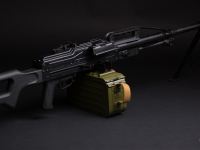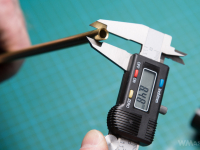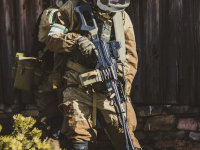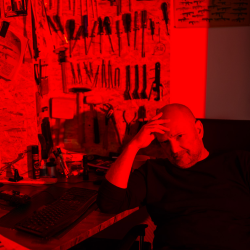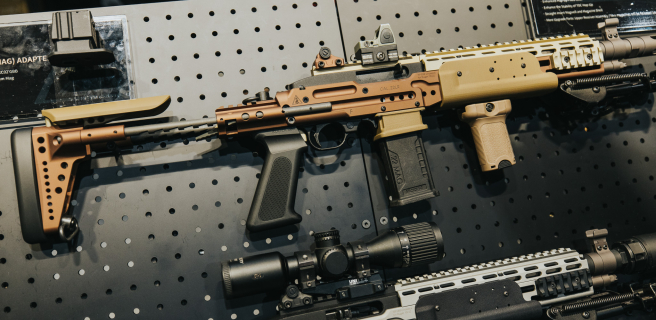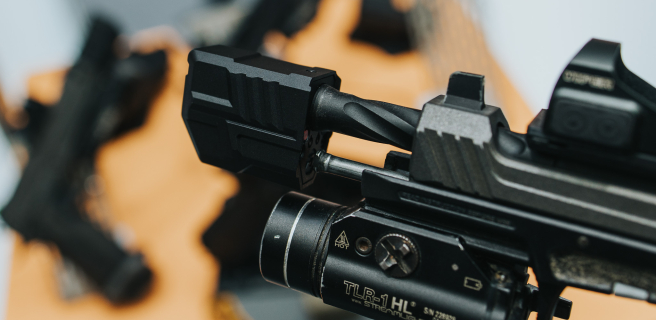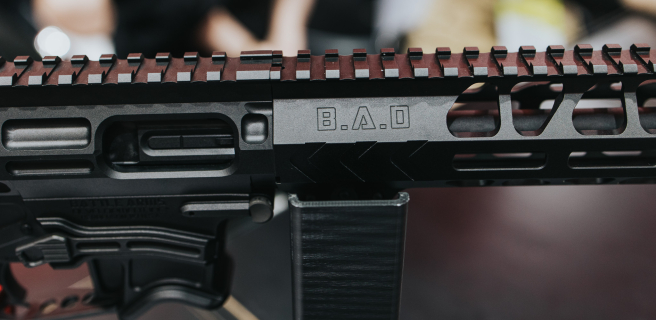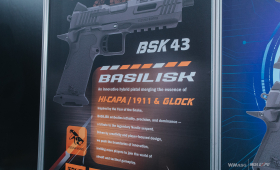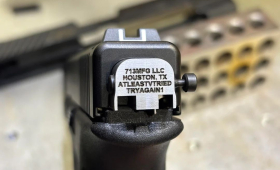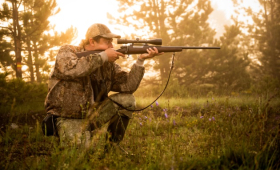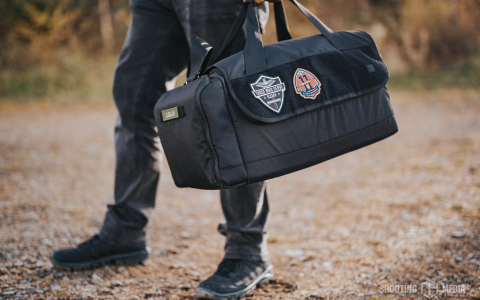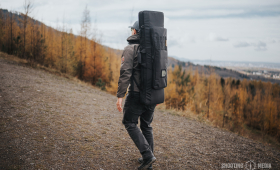The Pechenegs or Patzinaks were a semi-nomadic Turkic people from Central Asia speaking the Pecheneg language which belonged to the Oghuz branch of Turkic language family.
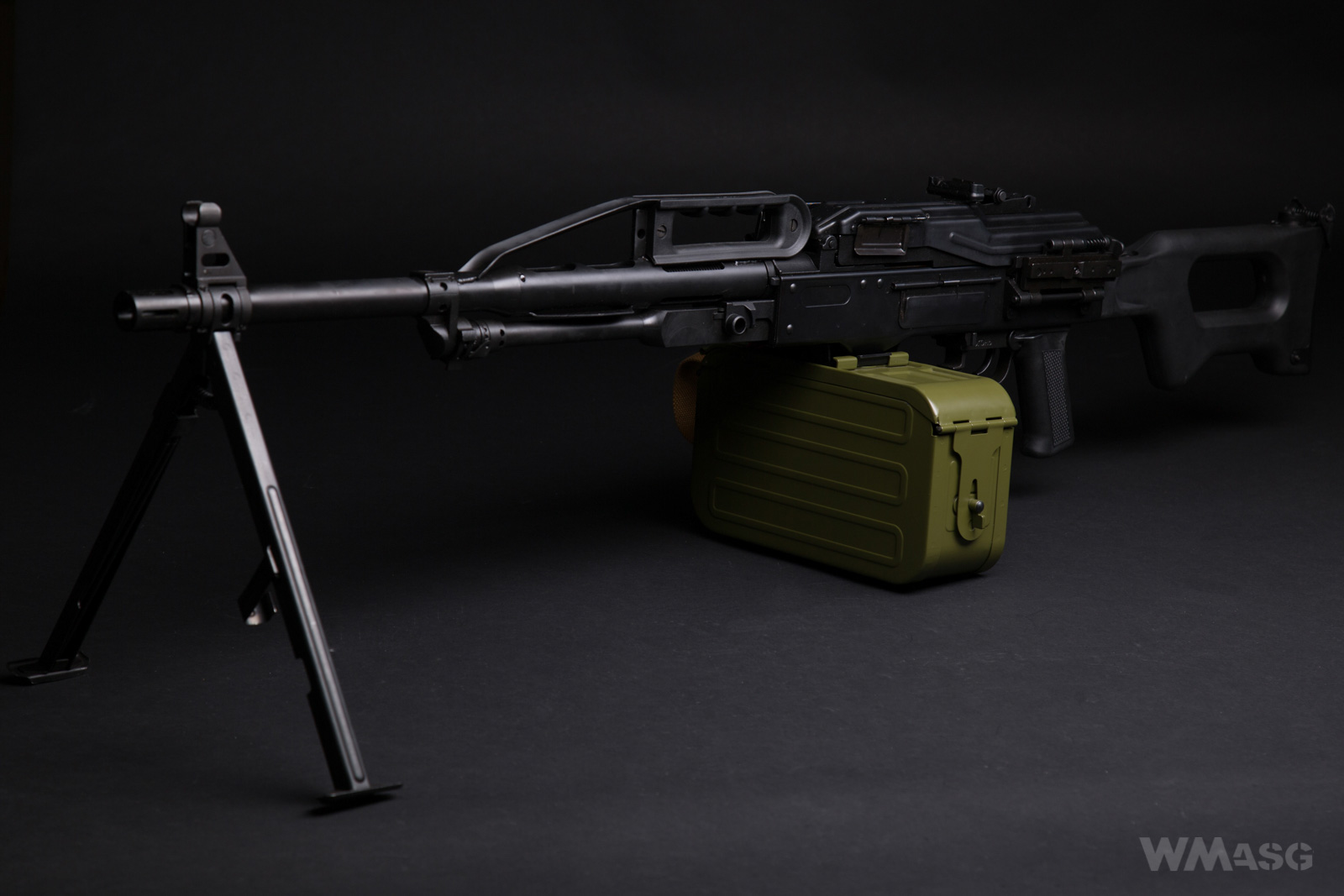
The PKP Pecheneg is a modified version of the PKM machine gun (also using the 7.62 x 54R round). Another differences between it and the PKM are the transport handle and the bipod attachment mounted on the very end of the barrel.
PKP by LCT Airsoft it an electric powered replica made almost entirely of steel. The only elements made of plastic are the buttstock and pistol grip. The replica is equipped with a MOSFET system. The place for the battery is provided in the magazine - hence the wires coming out of the receiver. The steel magazine is also electrically powered, but with a separate battery. This one also fits inside the magazine.
The craftsmanship, the coating and fitting of components are all excellent. Riveted connections are actually riveted and pined ones are actually secured with pins. I found only three screws that I would never expect in the real gun. Two of them secure the position of the gearbox in the receiver, the third secures the flash hider (a set screw).
Basic technical data
Overall length: 1155 mm;
Length of the inner barrel: 565 mm;
Magazine capacity: 5000 BBs (a box with an independent electric drive);
Weight without magazine: 8.7 kg;
Muzzle velocity (using 0.2 g BBs): approx. 430 fps;
Plug of the battery supplying the replica: T-connect;
Magazine battery plug: Tamiya mini;
Motor: short type.
Total length and weight without magazine are completely identical to the real firearm.
The package contents are very modest - apart from the replica and magazine, we only get a short instruction manual, the LCT product catalog and a metal tag (?) with the LCT logo and a drawing of a replica.
External design
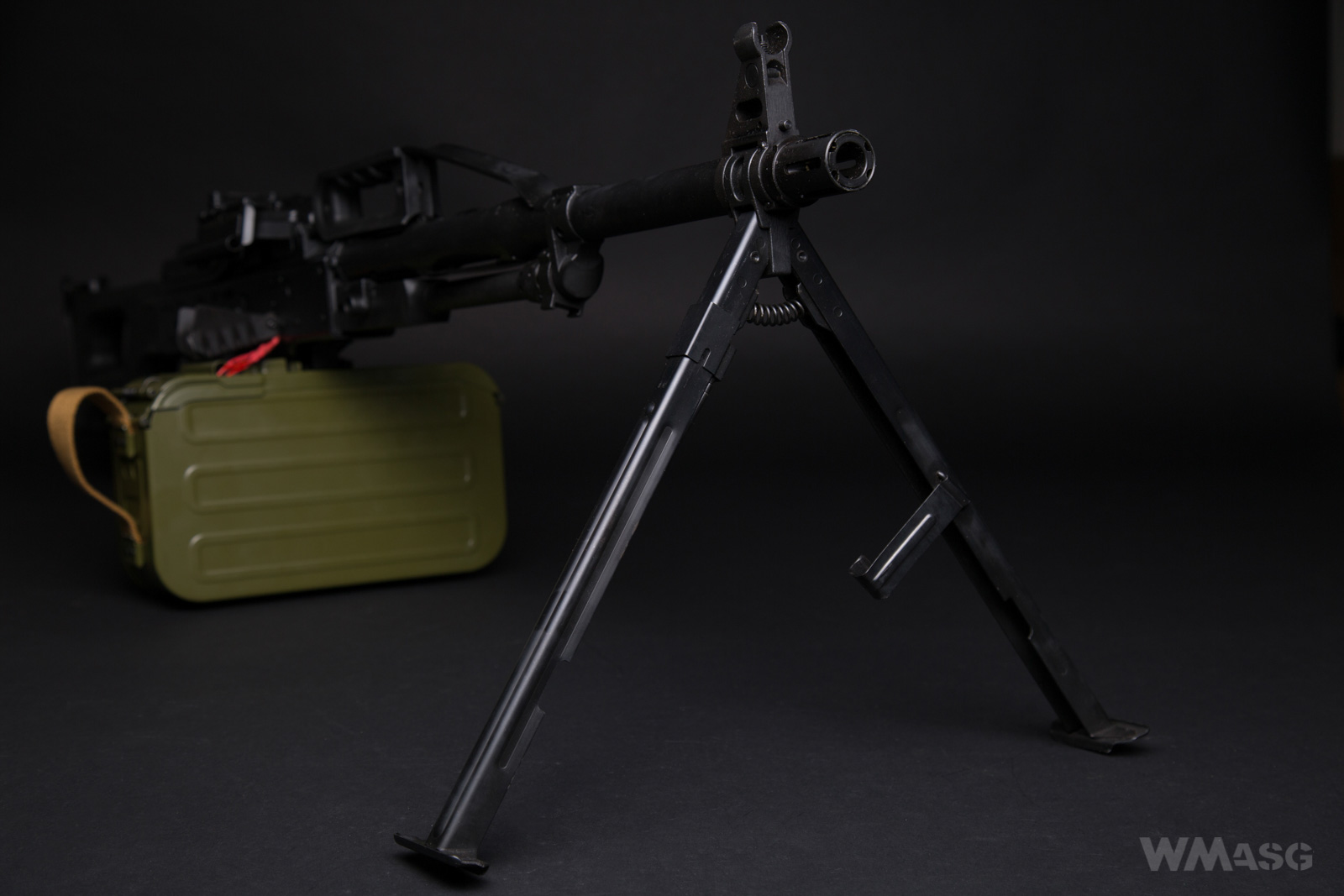
The LMG impresses with its size and mass. Let me remind you: the popular M249 and its derivatives, depending on the version, have from 800 to 1045 mm in length and weigh from 5.27 to 6.6 kg. The Pecheneg: 1155 mm and 8.7 kg. It's big and heavy. The "normal" PKM from A&K is longer by 25 mm, but lighter by as much as 1.5 kg.
The buttstock is made in a well known shape and is one of three parts made of plastic. According to a reenactor, to whom we showed the replica, of the original PKP buttstock it is slightly thinner. Here, in his opinion, a copy of a wooden PKM buttstock is used. The other plastic parts are the pistol grip and an inner liner in the transport handle.
In the upper part of the buttstock foot is the axle of the folding shoulder rest.
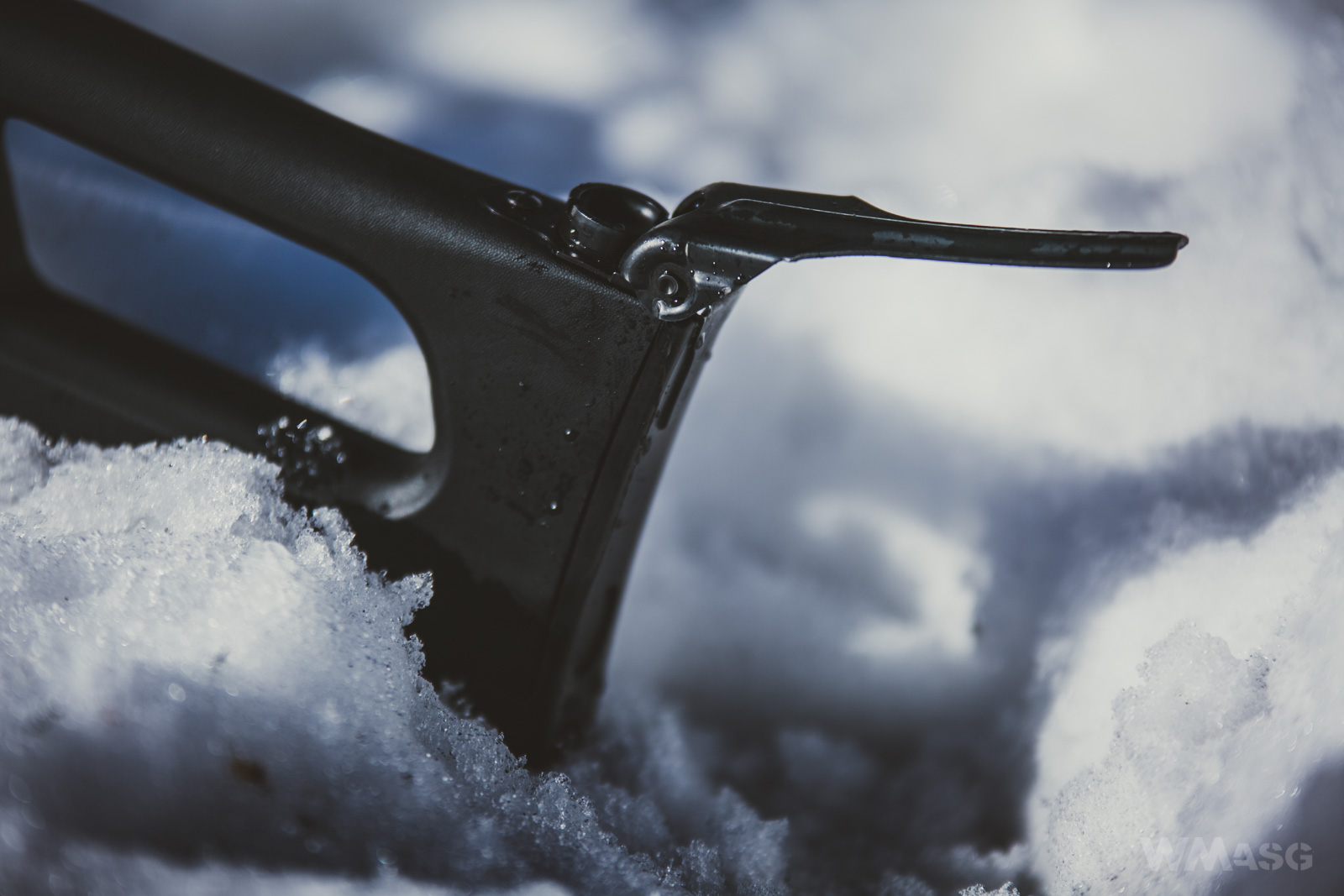
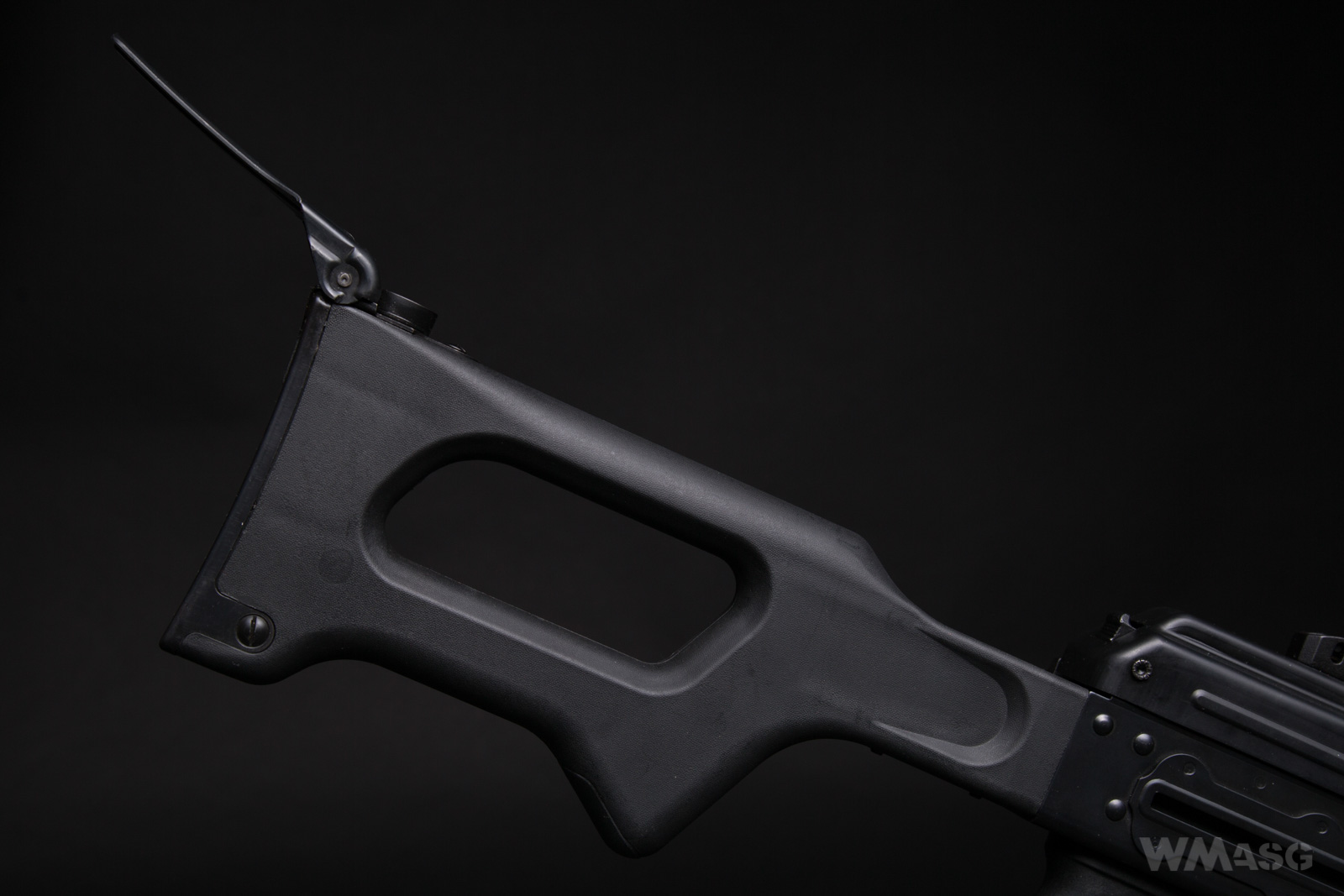
Right in front of it is an oil solvent container, used for maintenance of the weapon (the red arrow).
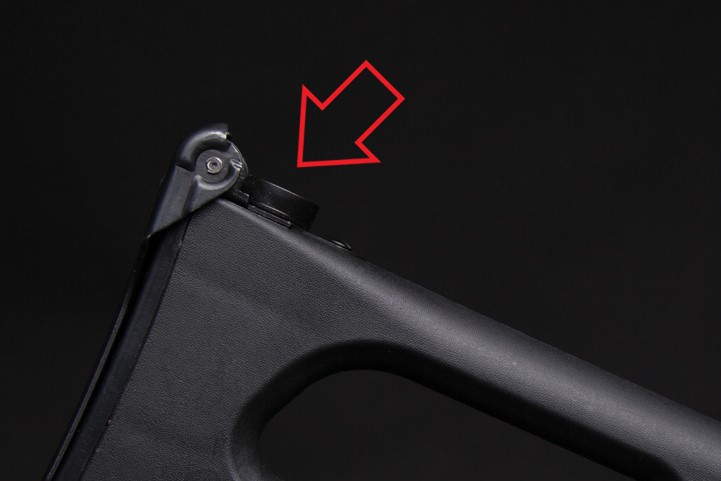
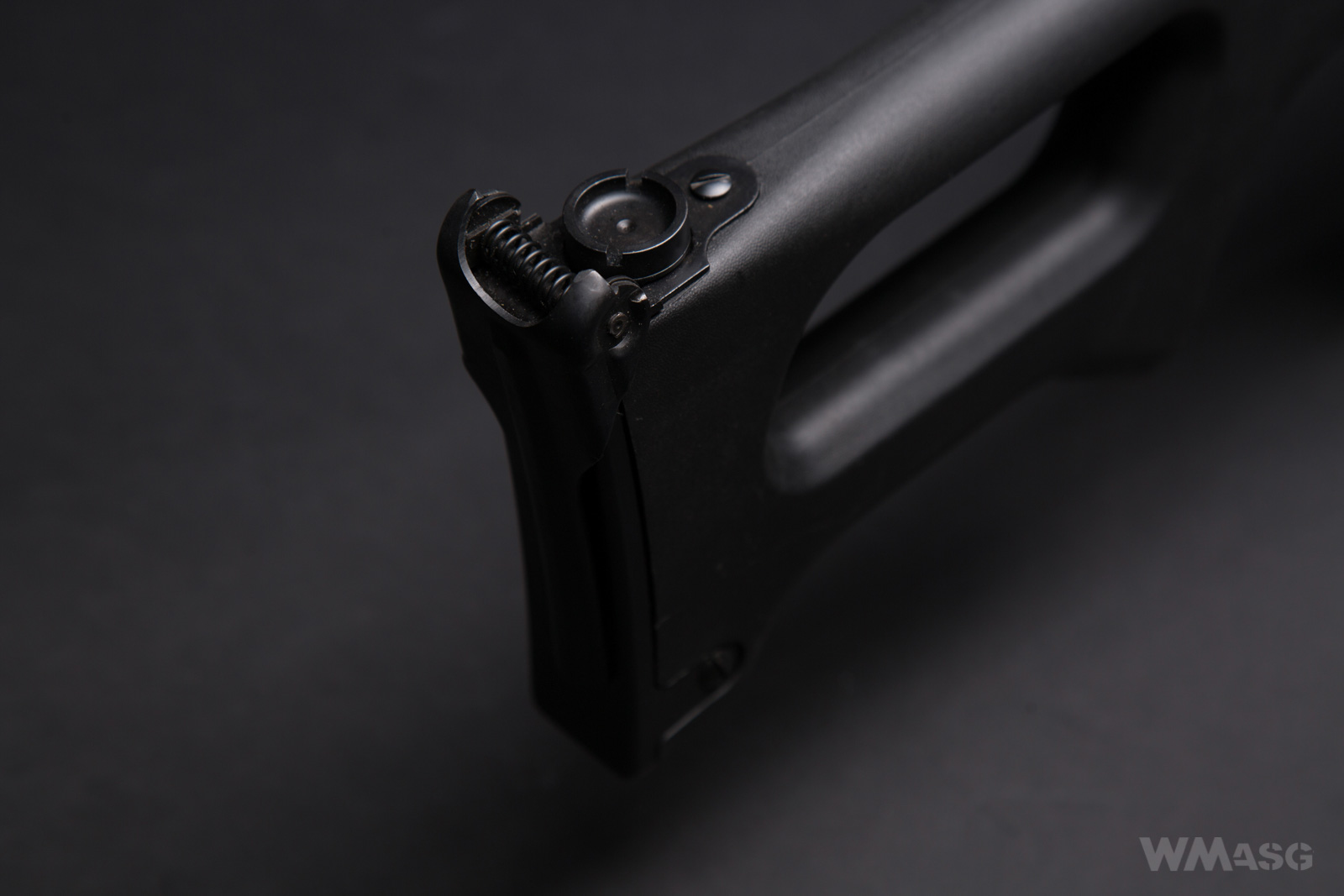
Unfortunately, in the described replica, it is only a dummy. The oil solvent container cannot be opened and after dismantling it looks like this:
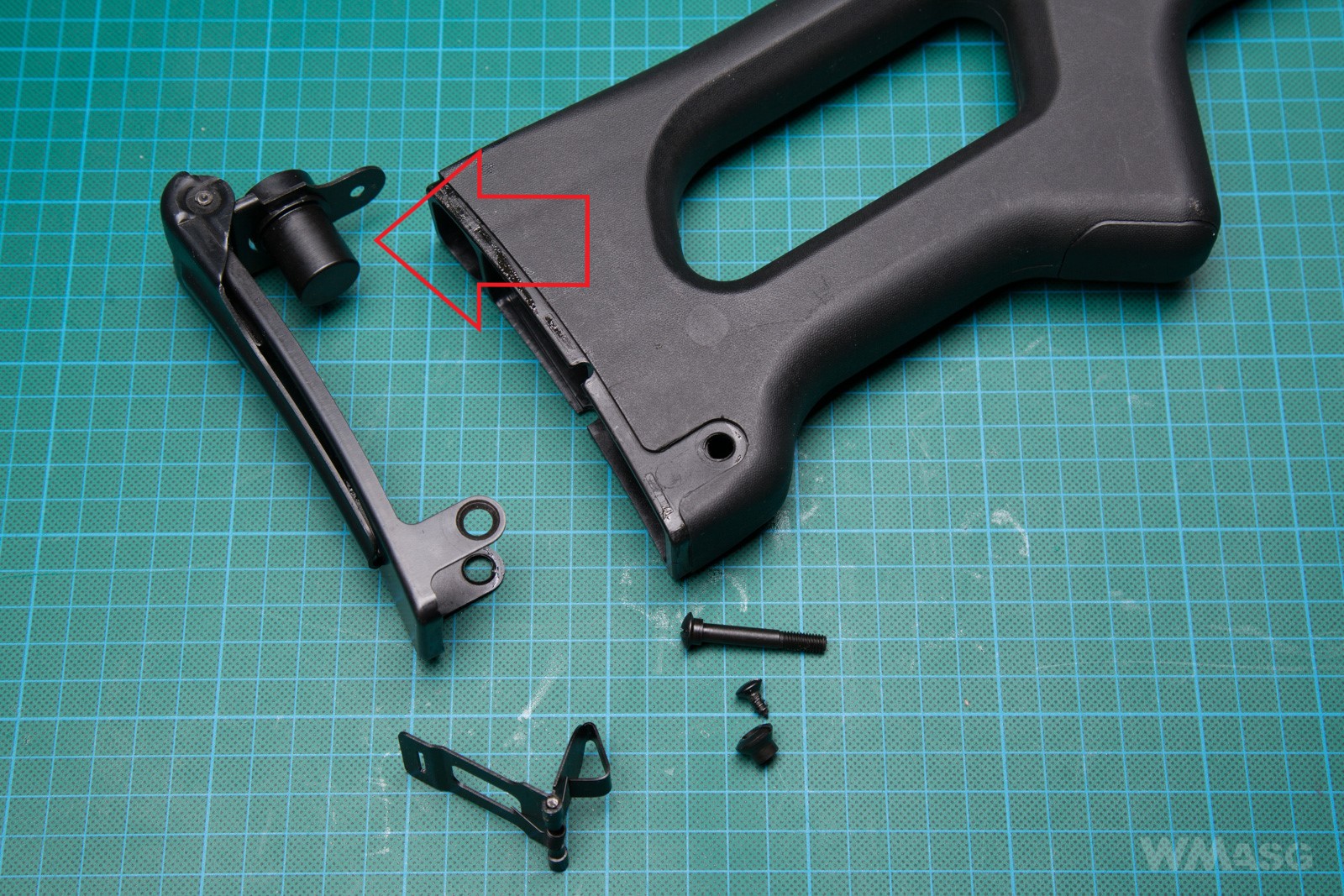
The PKM replica by A&K, that we reviewed some time ago, had this part made a bit better: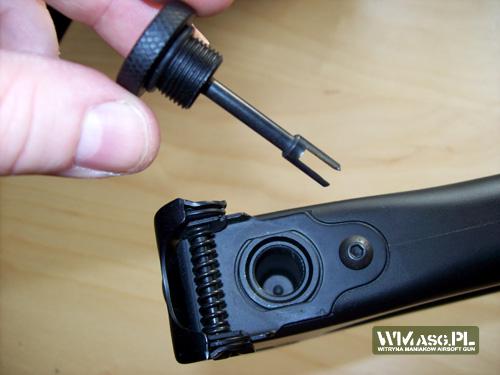
Photo from the review: AEG replica of the PKM light machine gun by A&K: http://wmasg.com/en/articles/view/3845
The right side of the machine gun. The charging handle can be moved, but it has no spring or other mechanism attached to it. He stops in any position once it is let go. Contrary to what I expected and according to a professional, this is exactly how the handle work in the original gun.
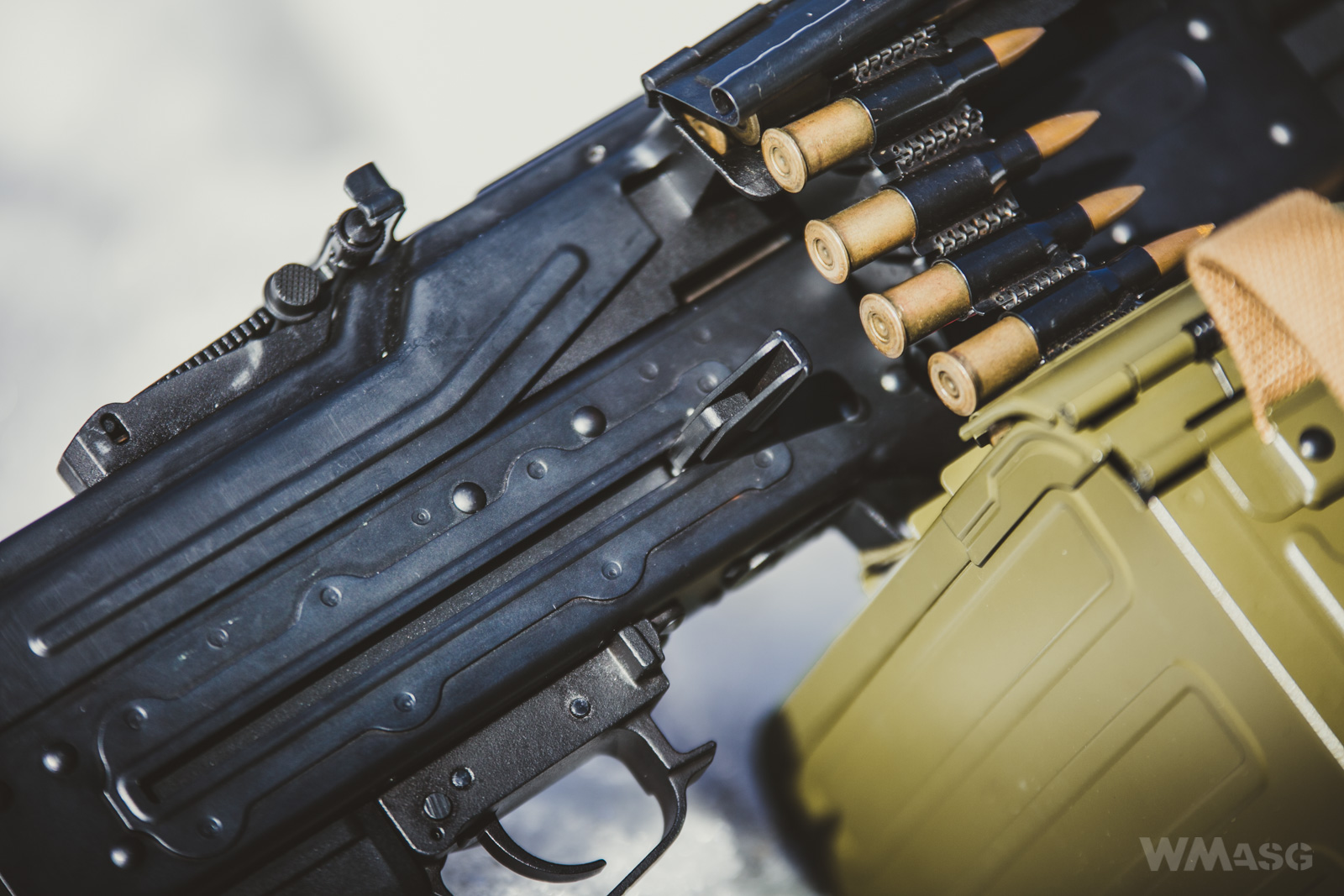
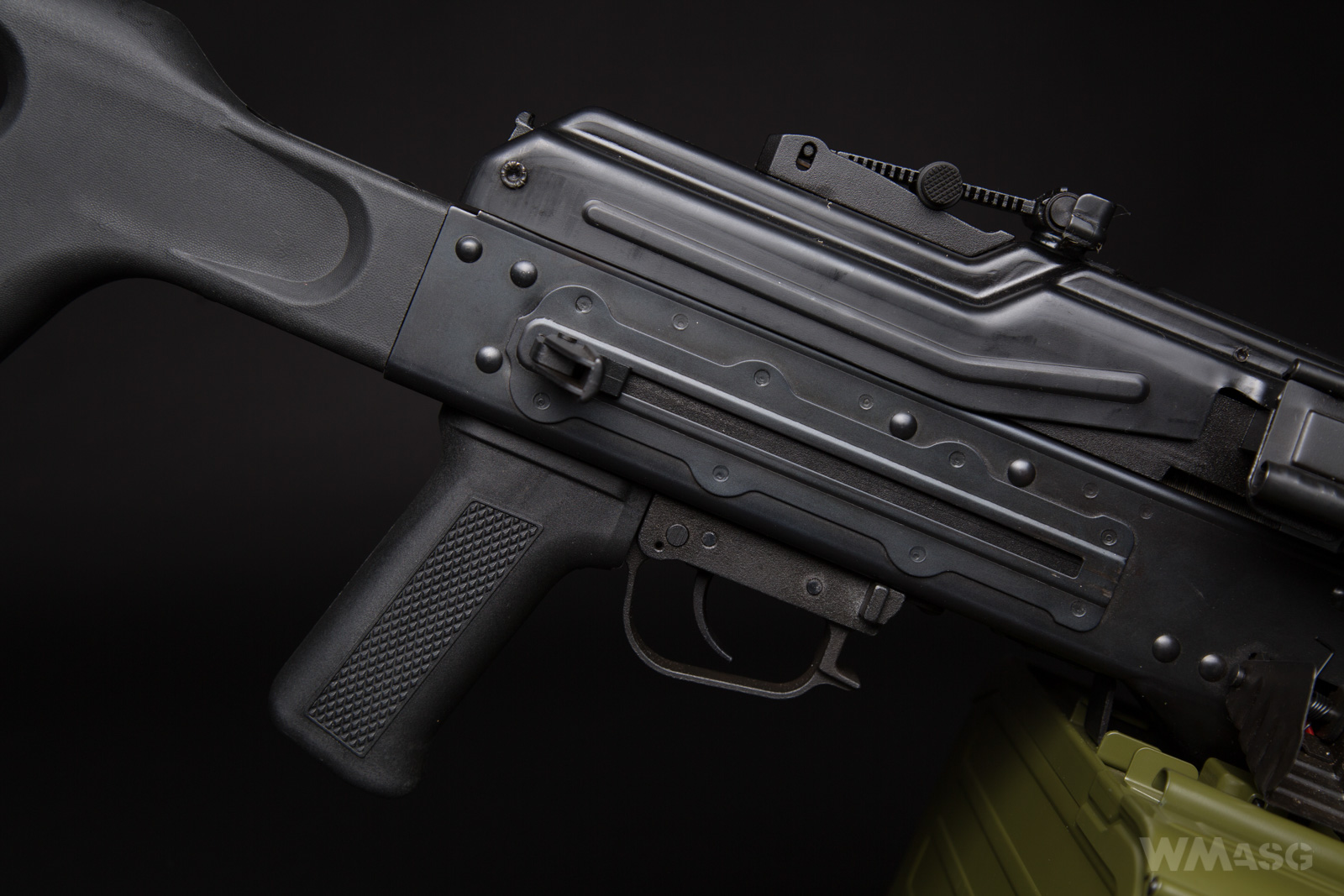
Further towards the barrel exit: the box magazine attached to its mounting point, the ammunition belt support and the feeding port cover. The power cords are visible.
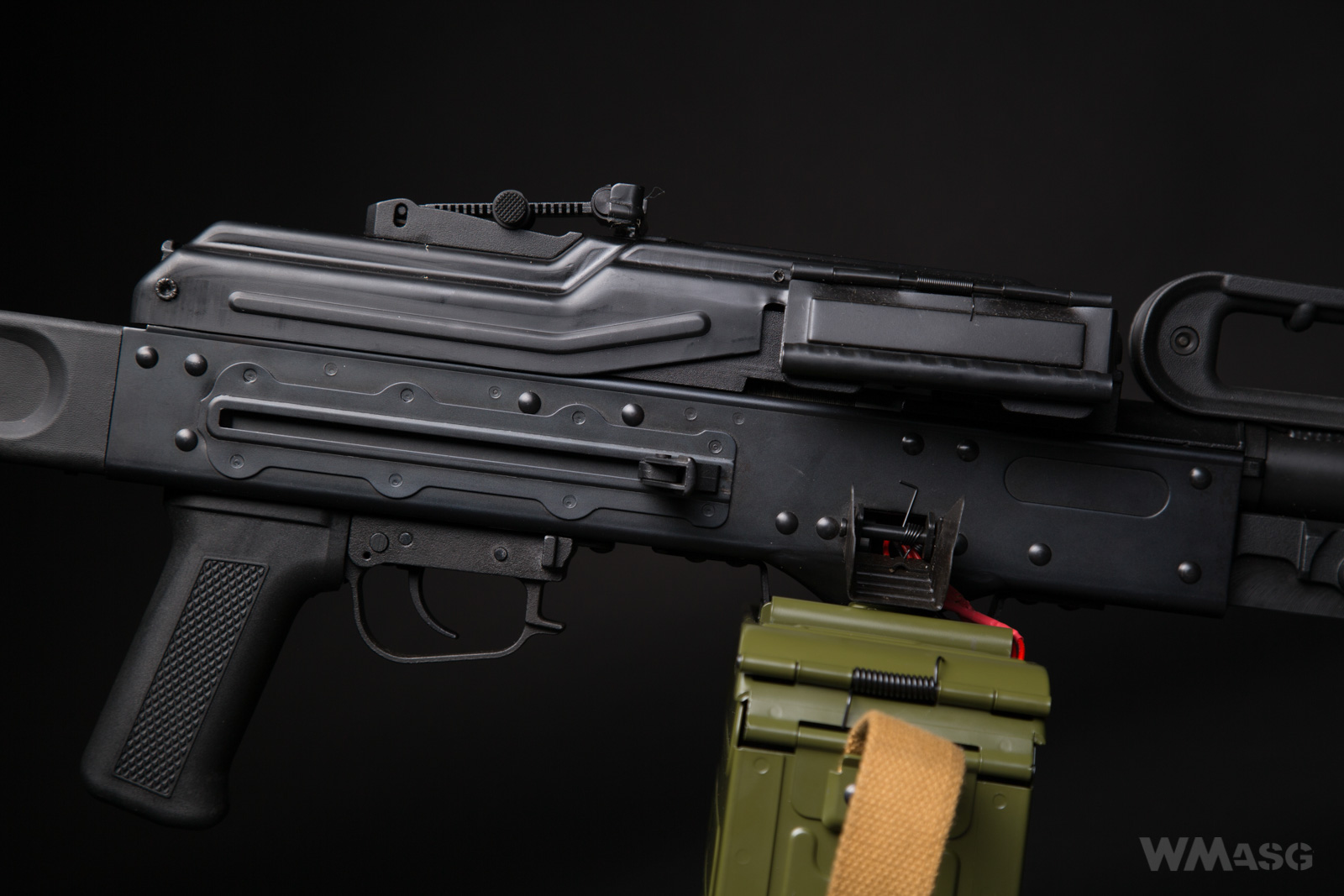
The spring of the cover is strong - it remains closed and does not clatter.
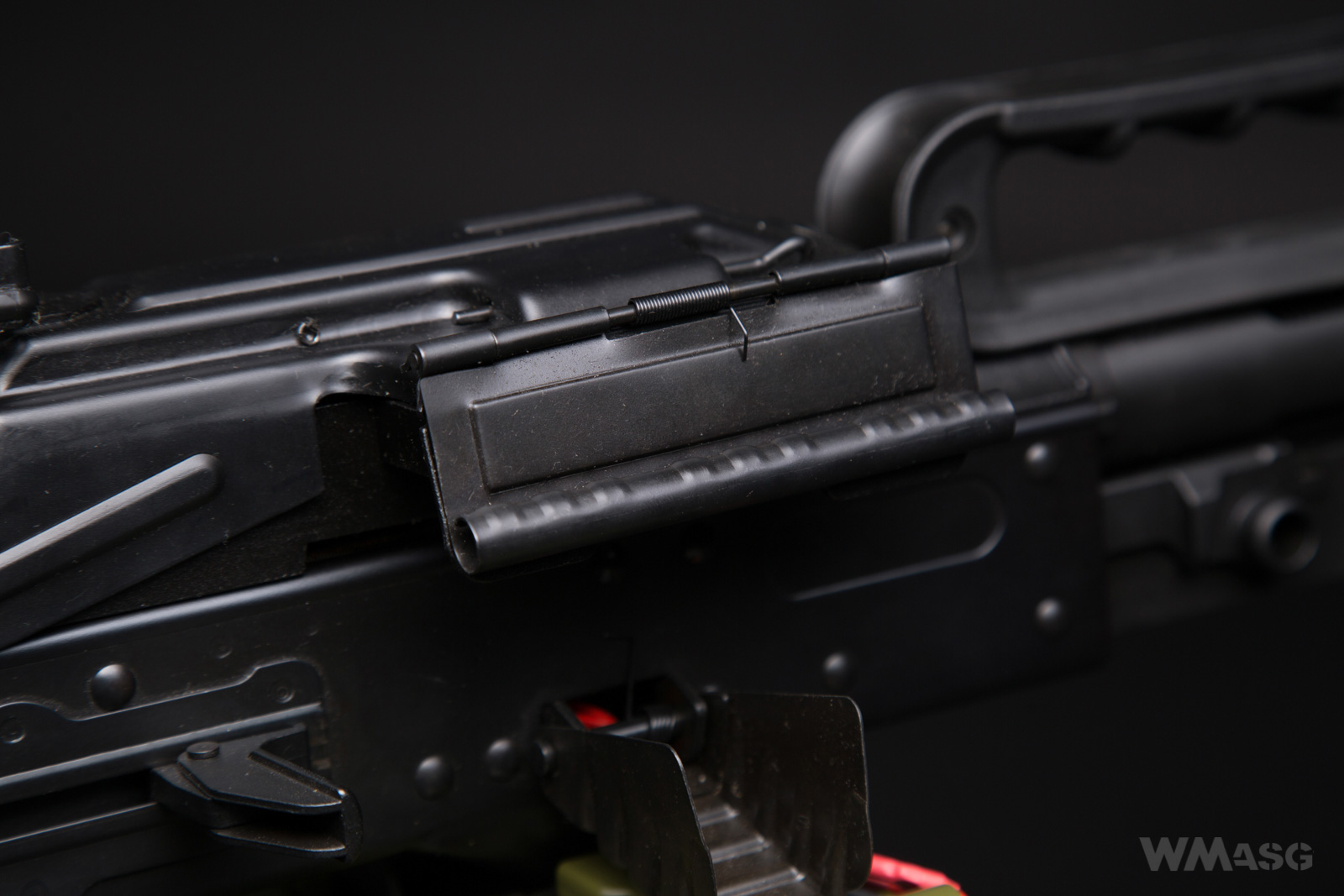
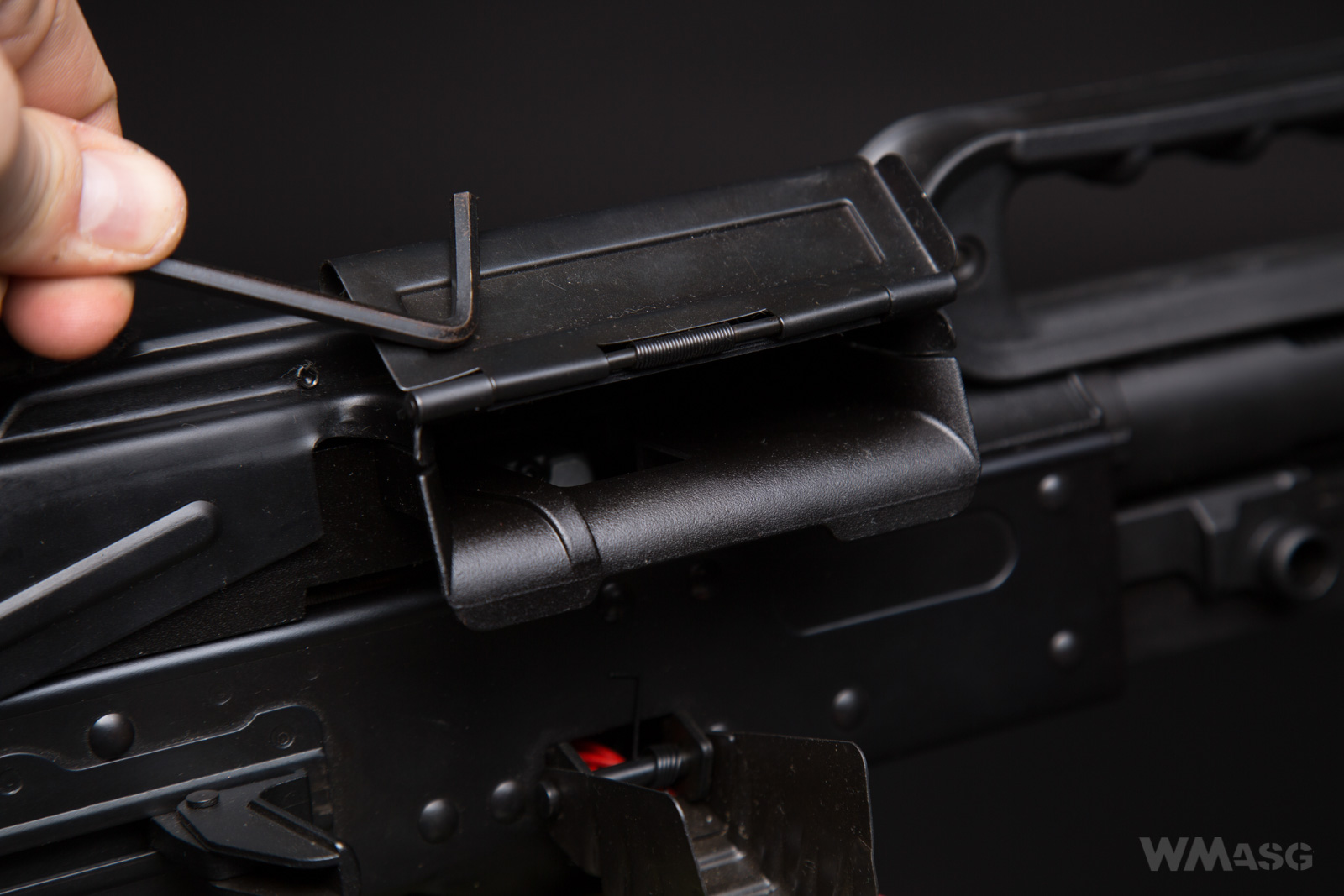
On the left side of the receiver there are two more covers. In the original, an empty ammunition belt is extracted through the upper one, while the lower one is used to eject spent casings.
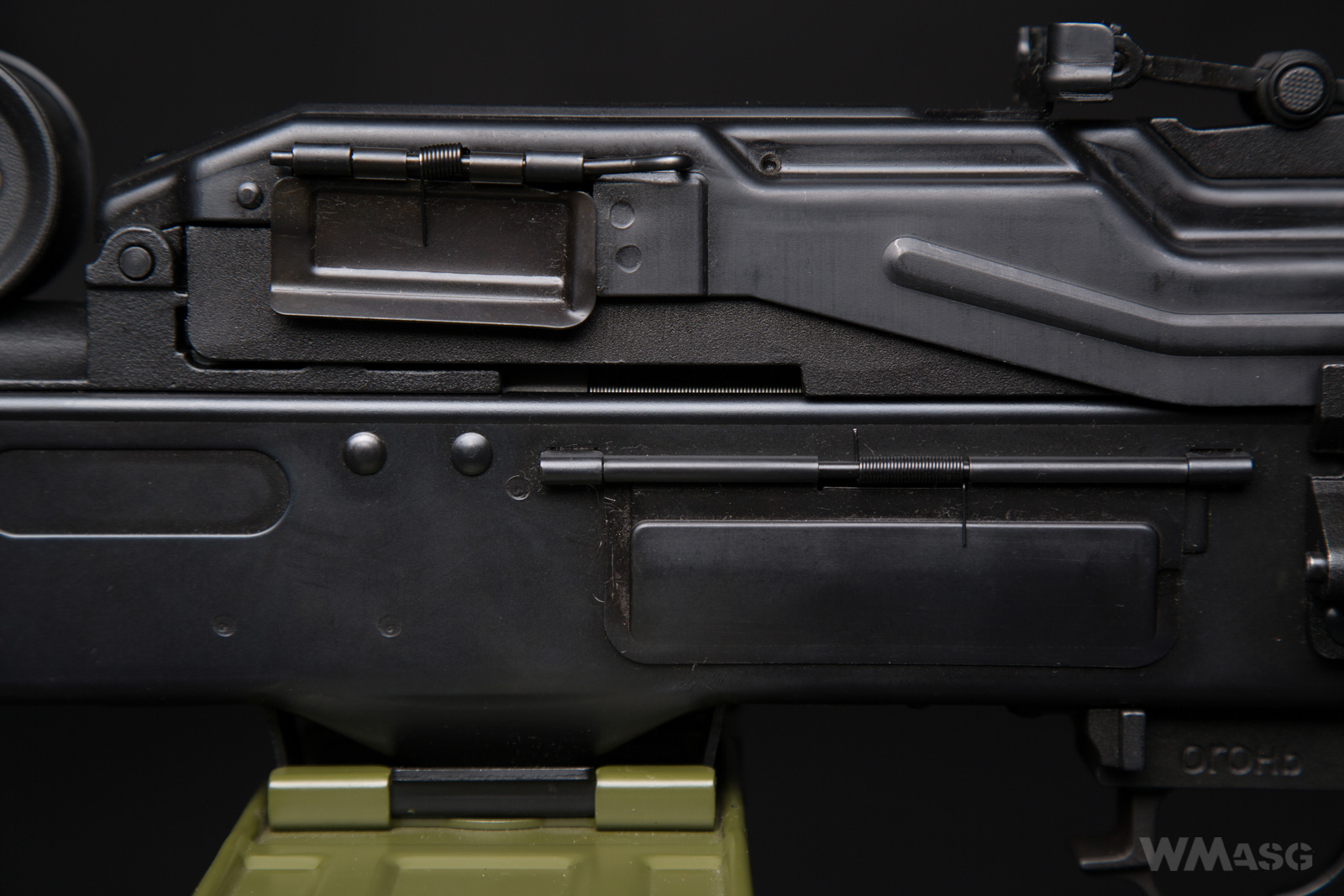
As with the feeding port cover, these also have strong springs. The belt extractor cover:
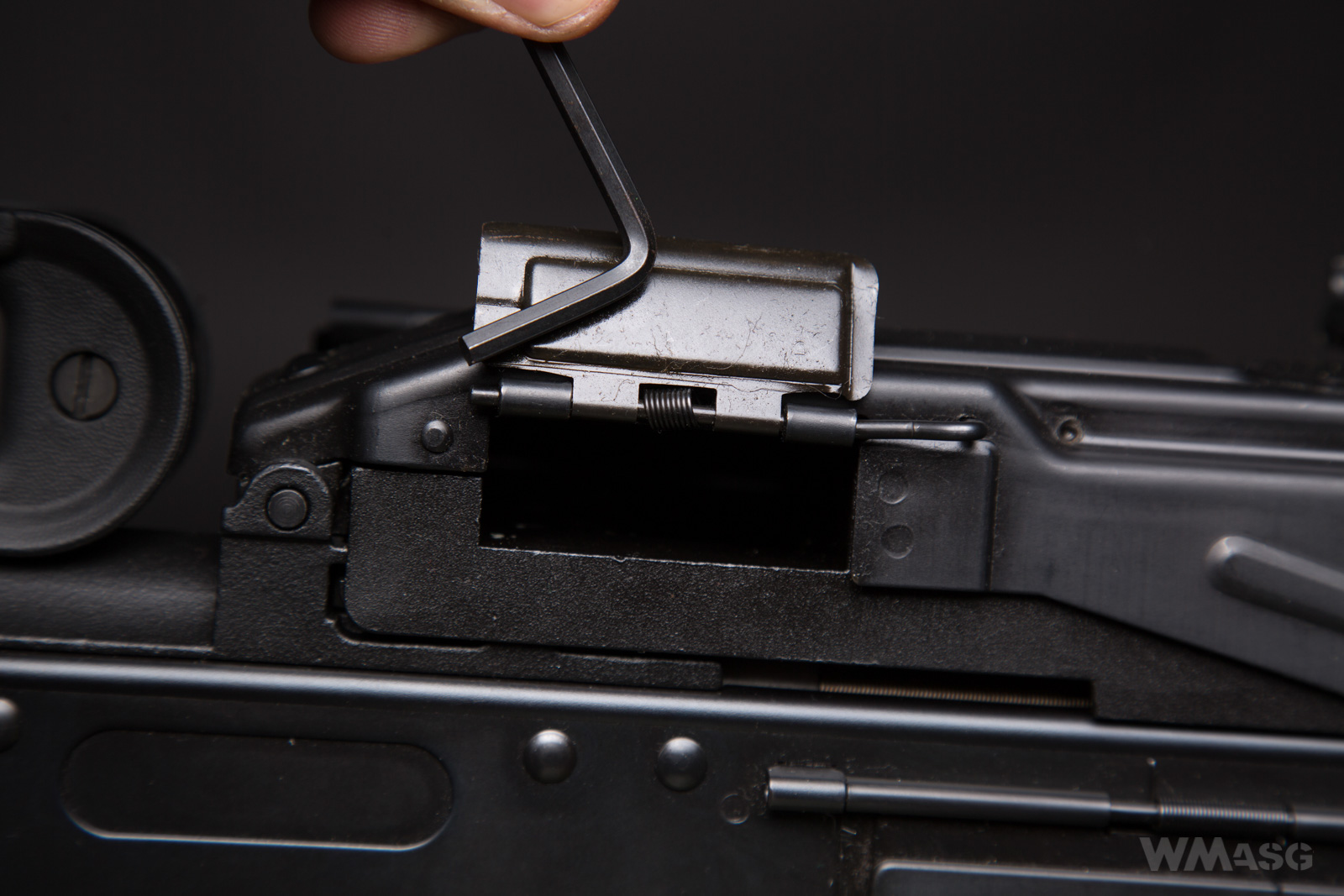
And the ejection port cover, through which the gearbox is visible:
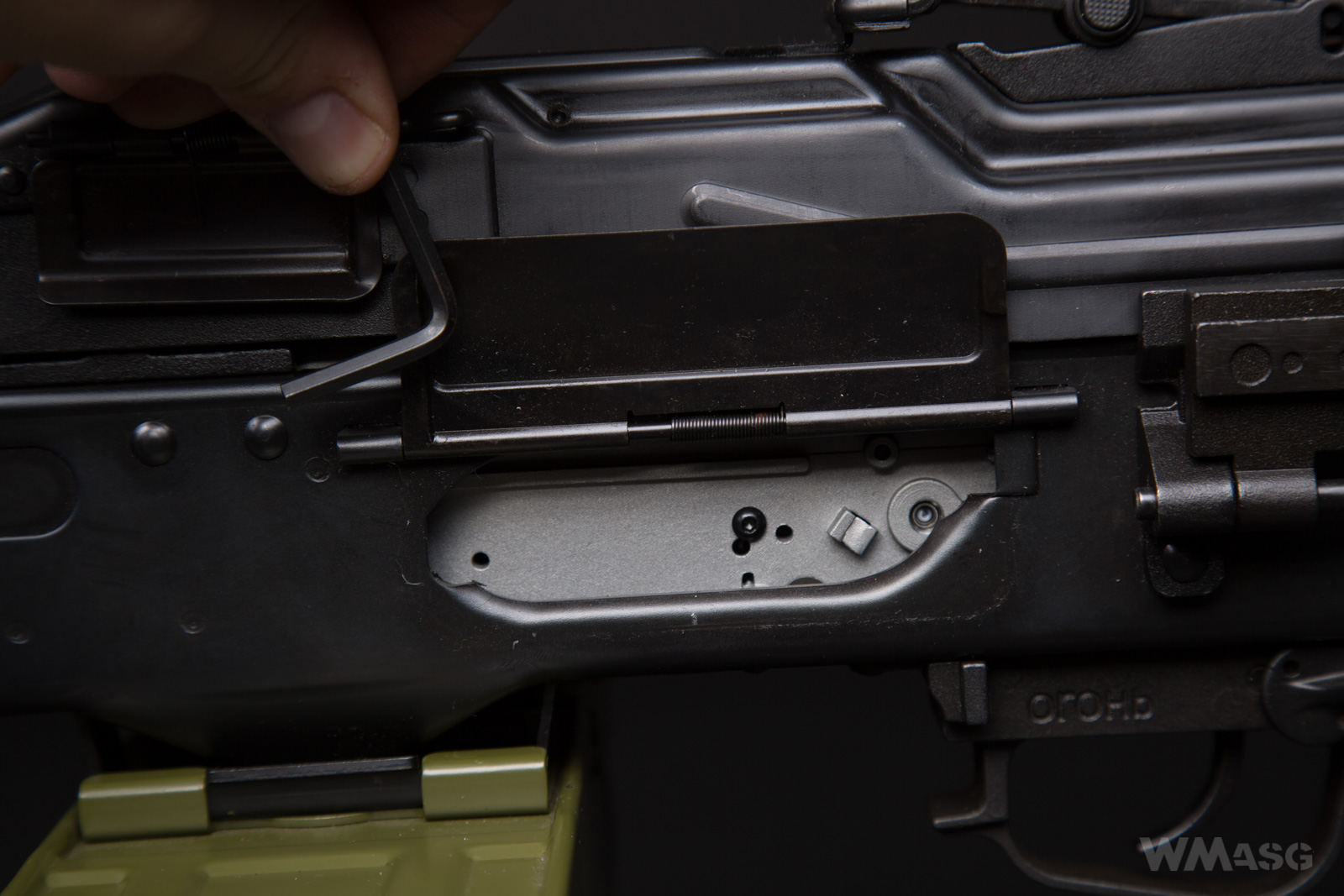
Right next to a safety switch which has two positions (safe/fire). The protruding wing acts as an indicator. The photo below shows a the safety on.
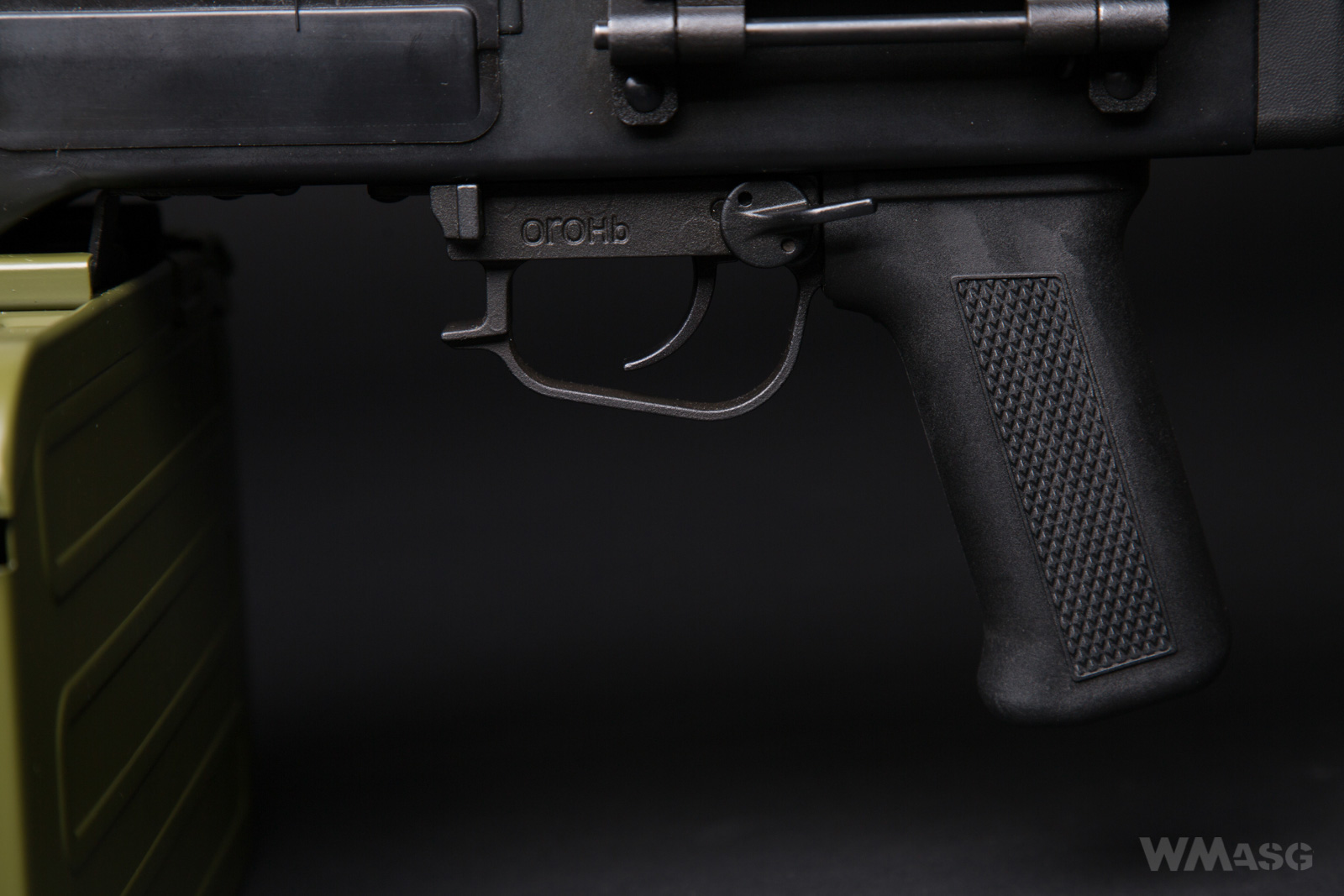
The "огонь" caption means "fire". This means the safety is off. And that is correct. But the attentive eye of a specialist noticed that the caption on the receiver is not Cyrillic, but Latin letters and this is not how it should be. Also, the inscription should be filled with white paint.
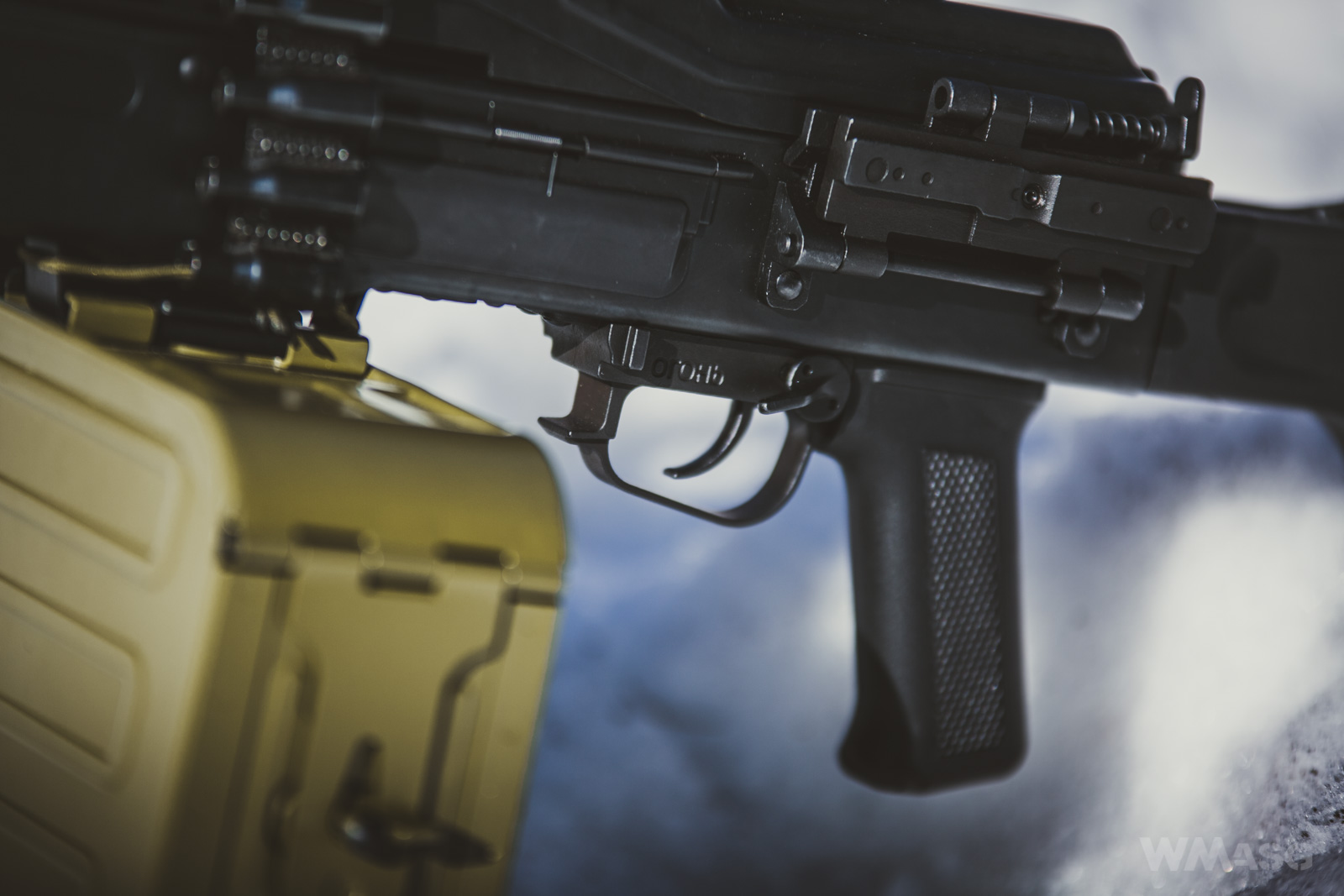
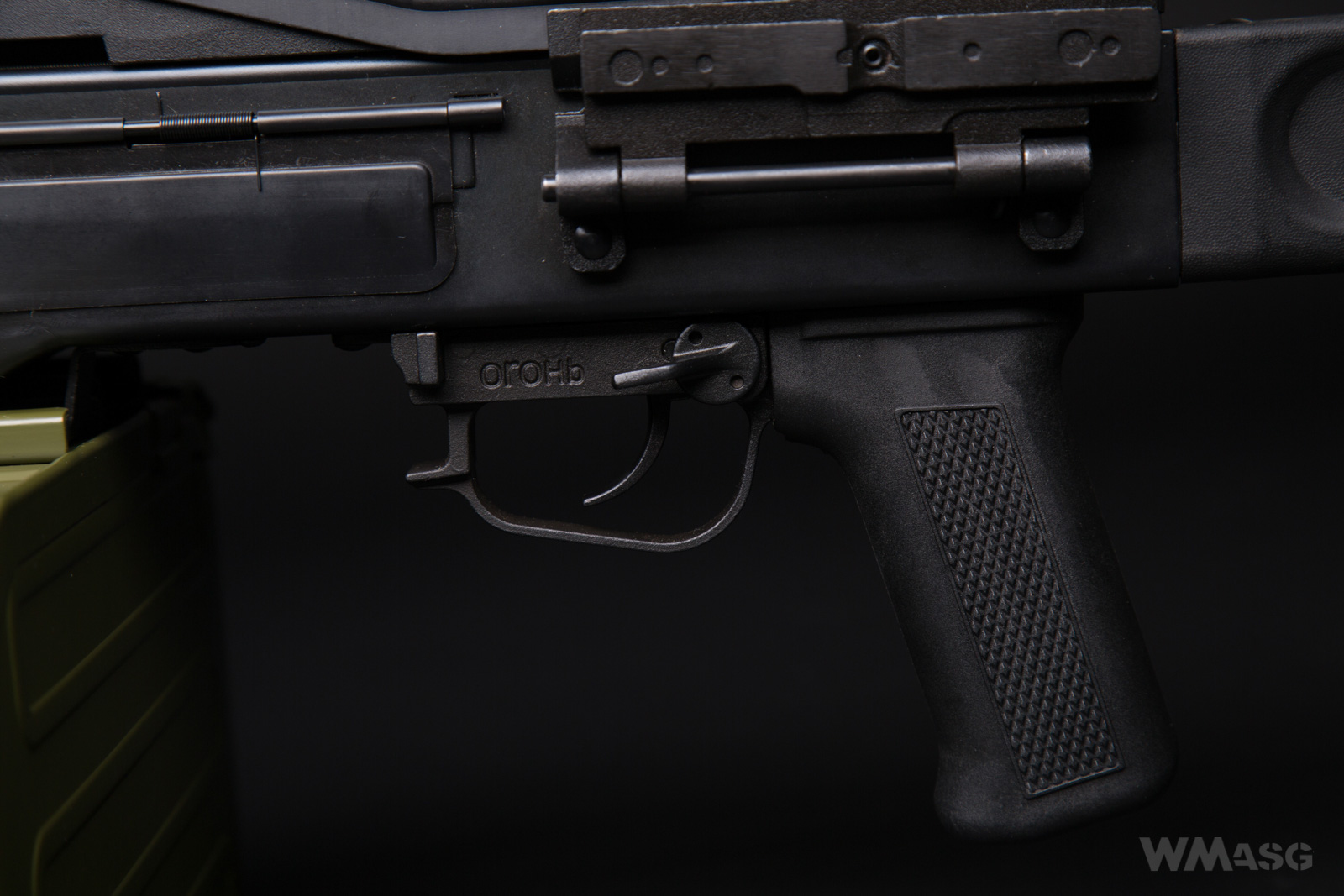
The pistol grip shown in the picture is made of the same material as the buttstock. It is worth noting that it is clearly narrower than in the AK replicas, in which the motor must be fitted in. In addition, the PK/PKP grip is connected to the receiver at a slightly different angle than the AK grip. In the replica, it was reproduced correctly.
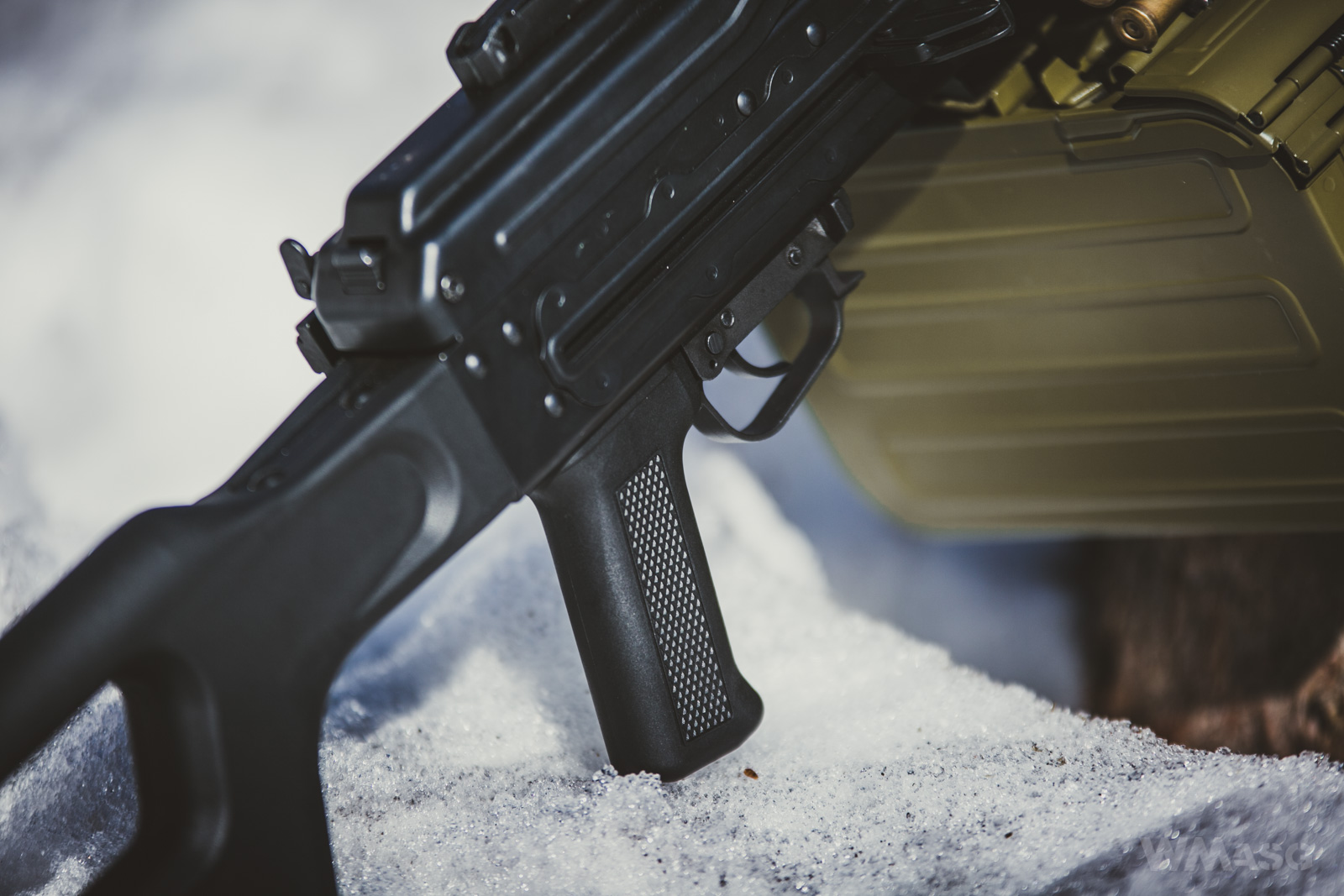
Right above, there is a tilting mounting rail for optical or optoelectronic sights. The arrow indicates a wing that should be pulled back to tilt the rail with the sight attached to it.
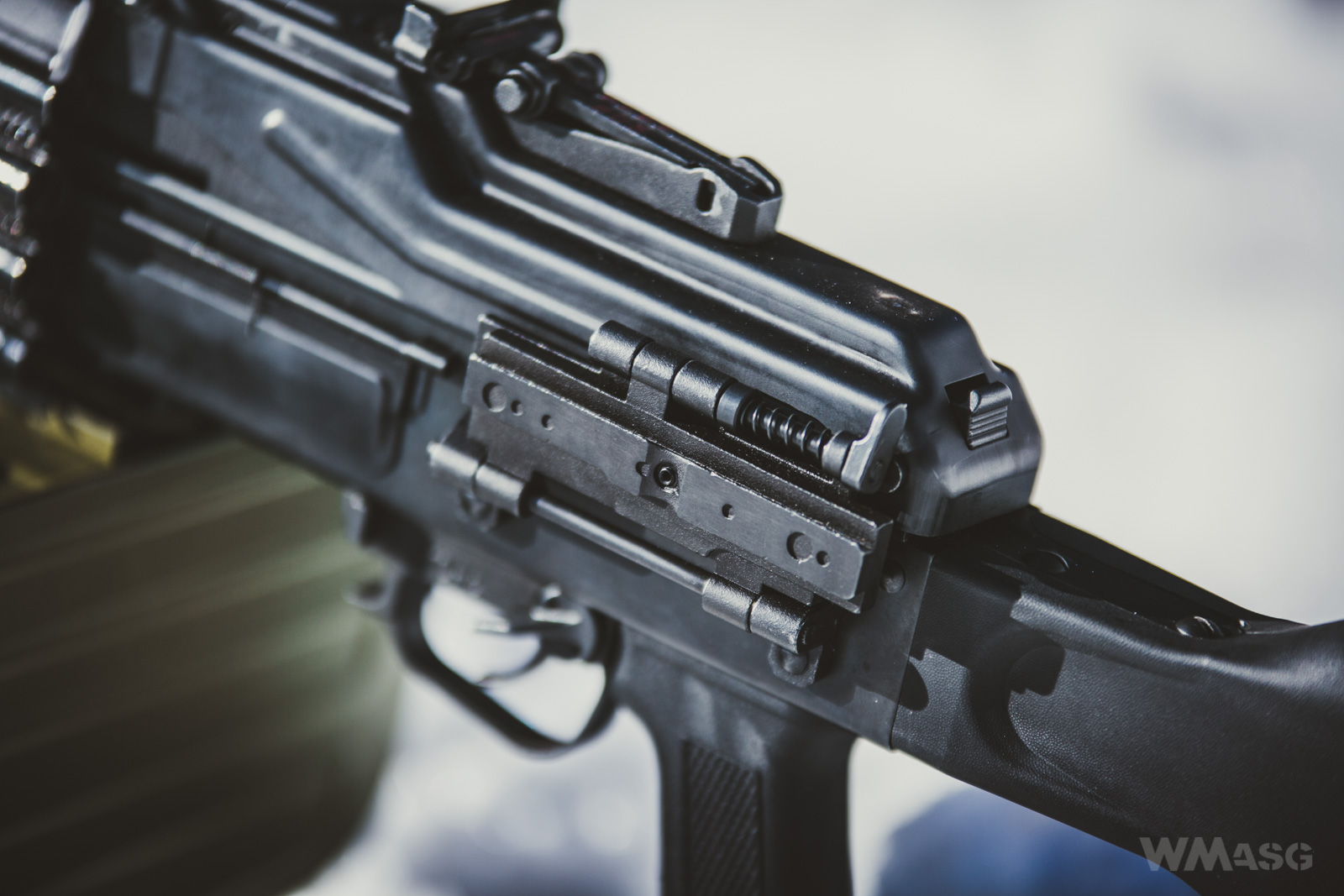
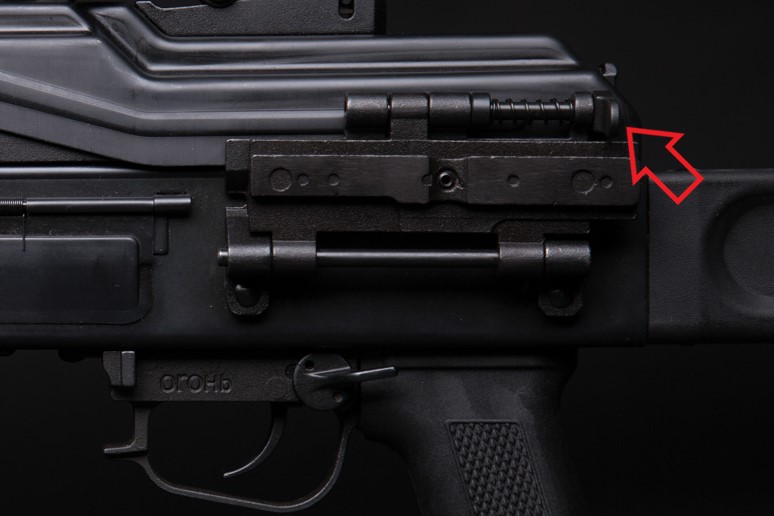
The rail seen from the rear in the combat position: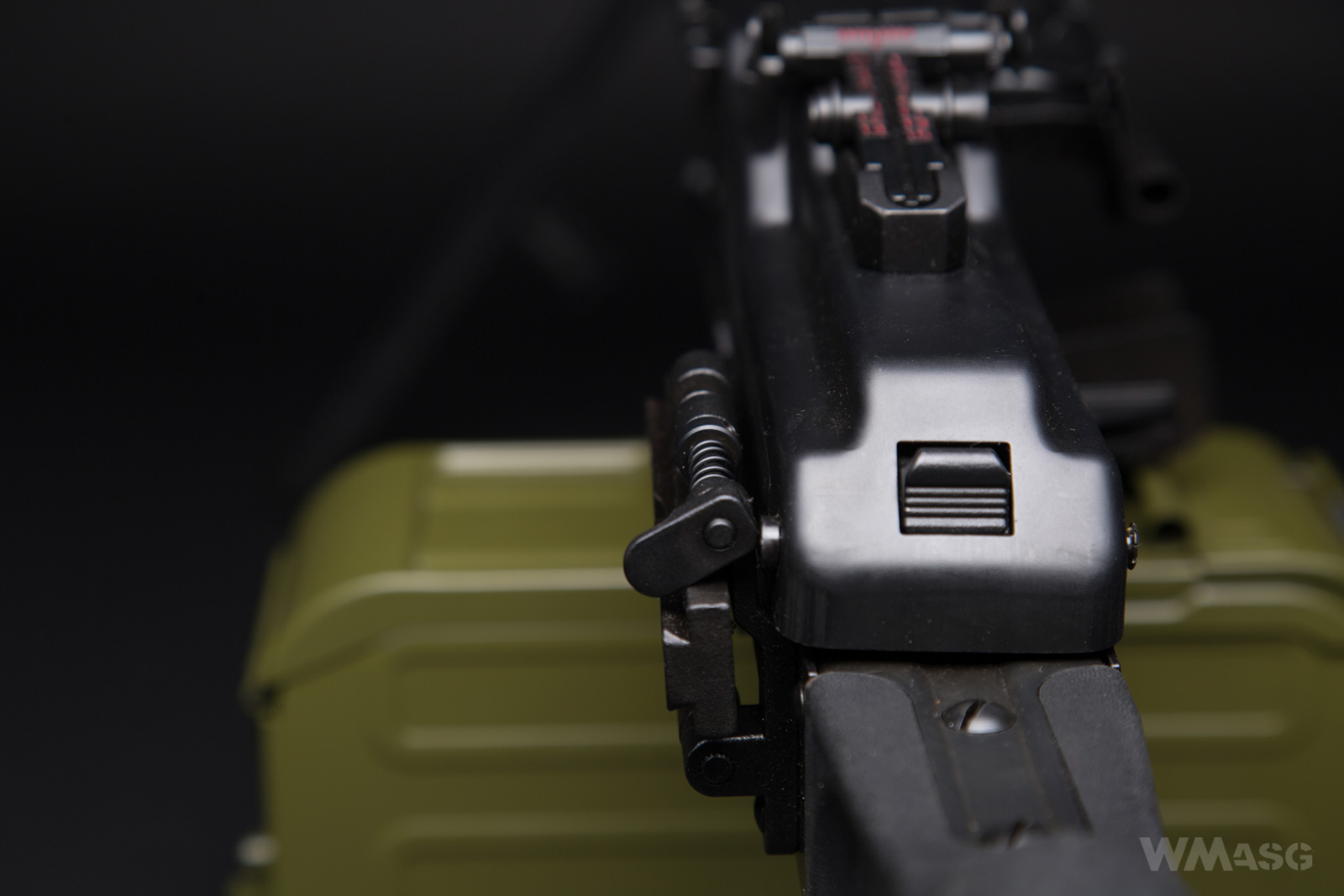
and tilted: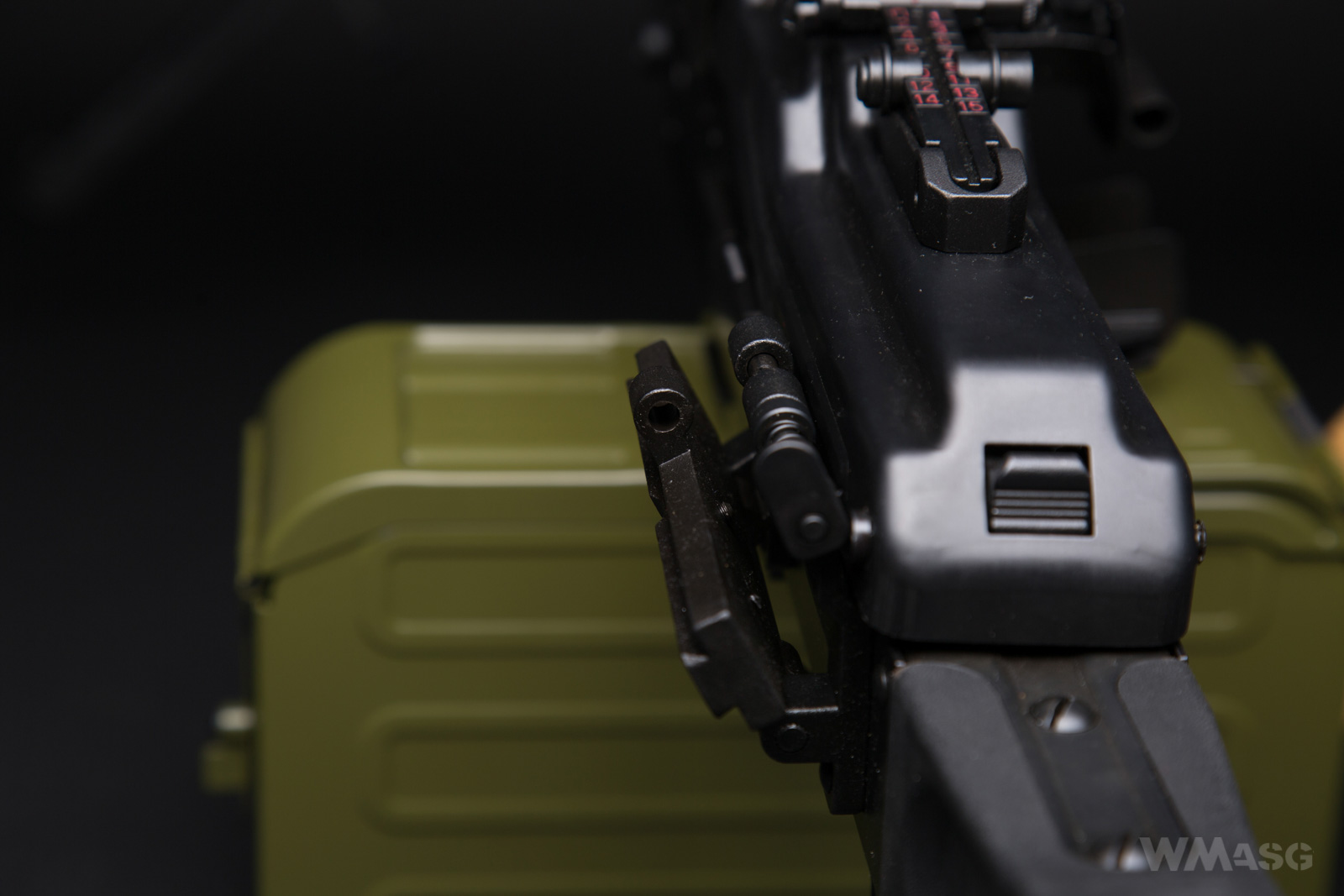
Some people will probably ask why to tilt the calibrated sight. Let me remind you: the original PKP is feed from a belt. To put in an ammunition belt you have to lift the receiver cover ... It it clear now?
In the last two photos you can clearly see the cover latch. In the replica, after pressing the latch, you can lift the cover to adjust the HopUp. The adjustment knob is located under the cover, in the place indicated by the red arrow.
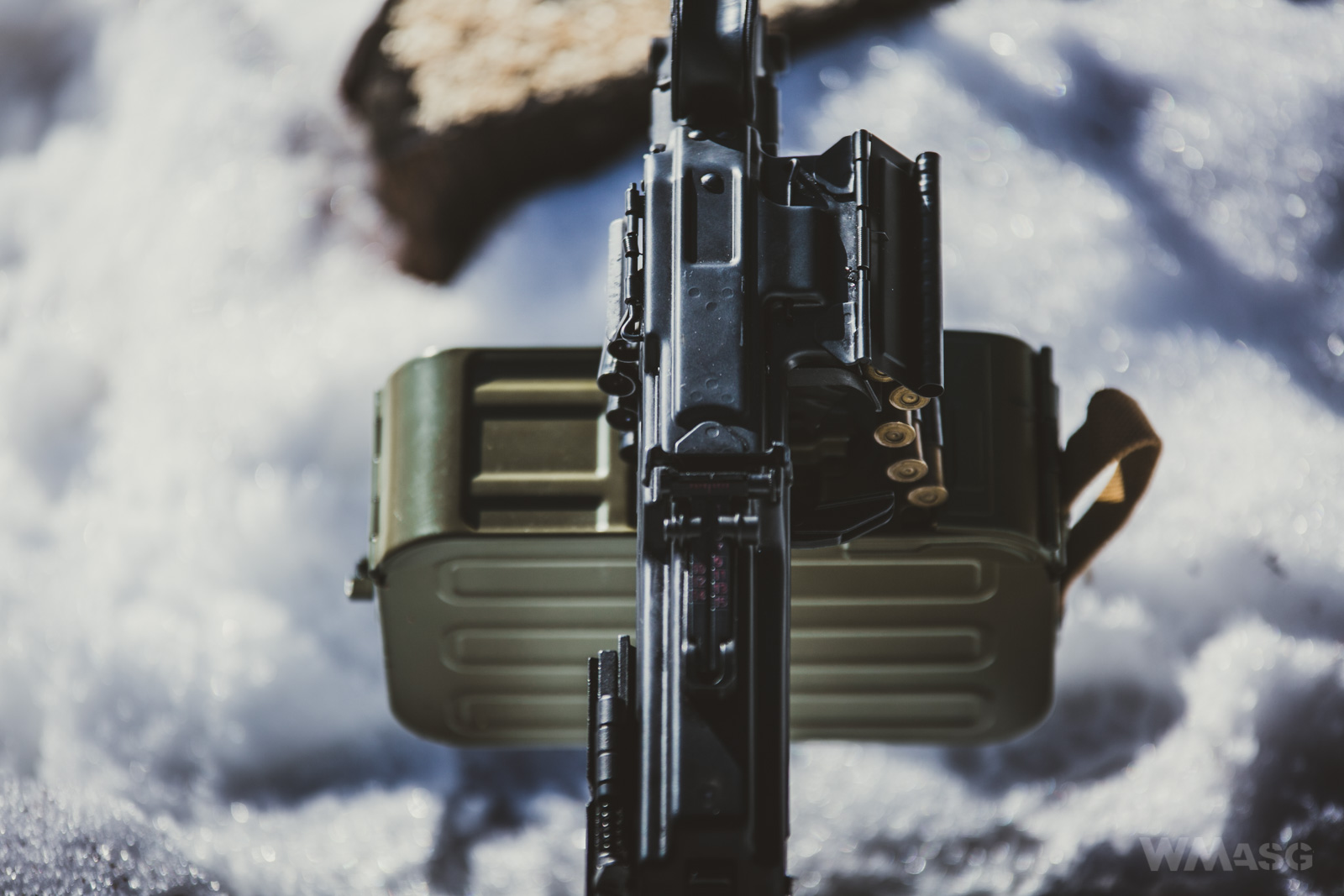
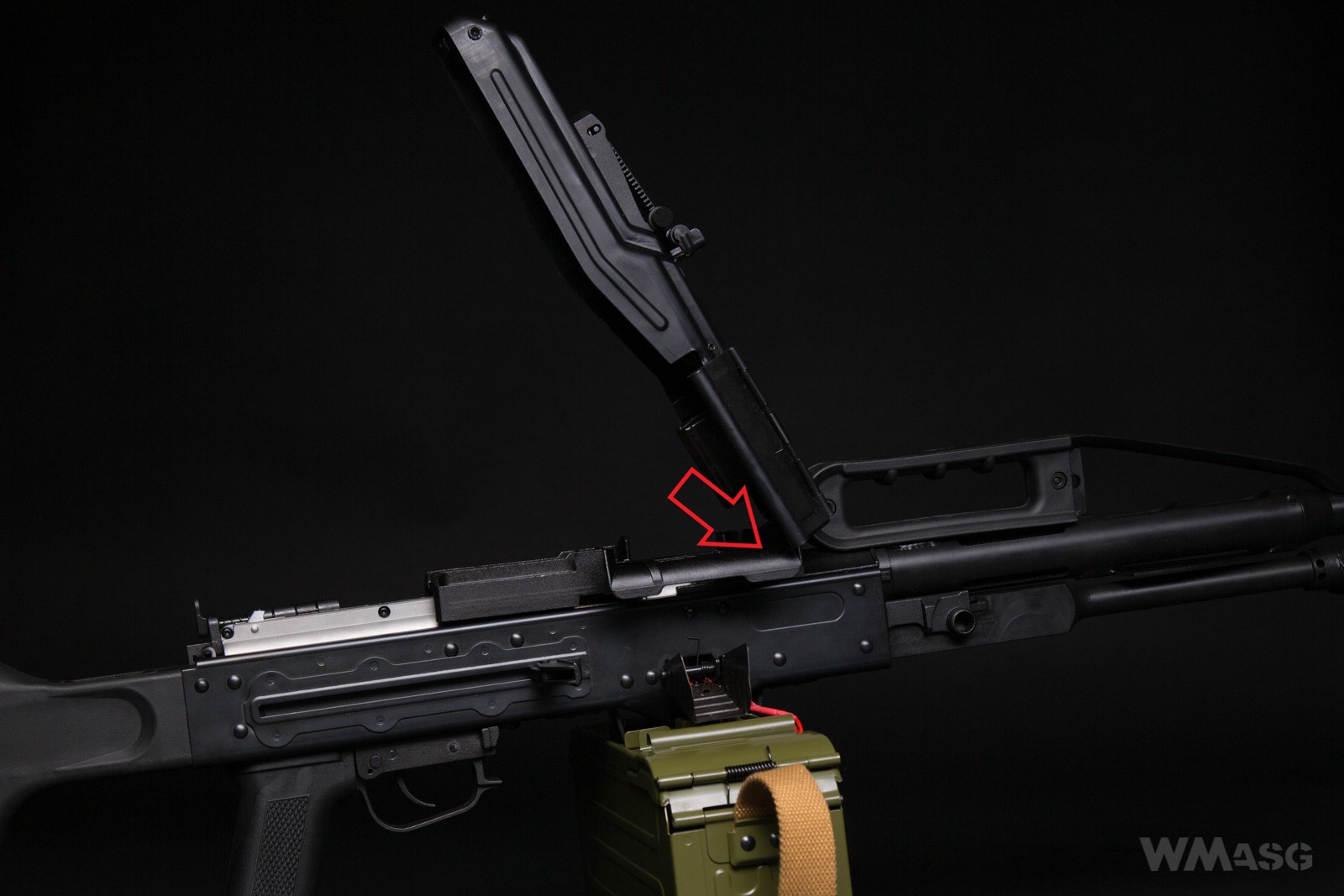
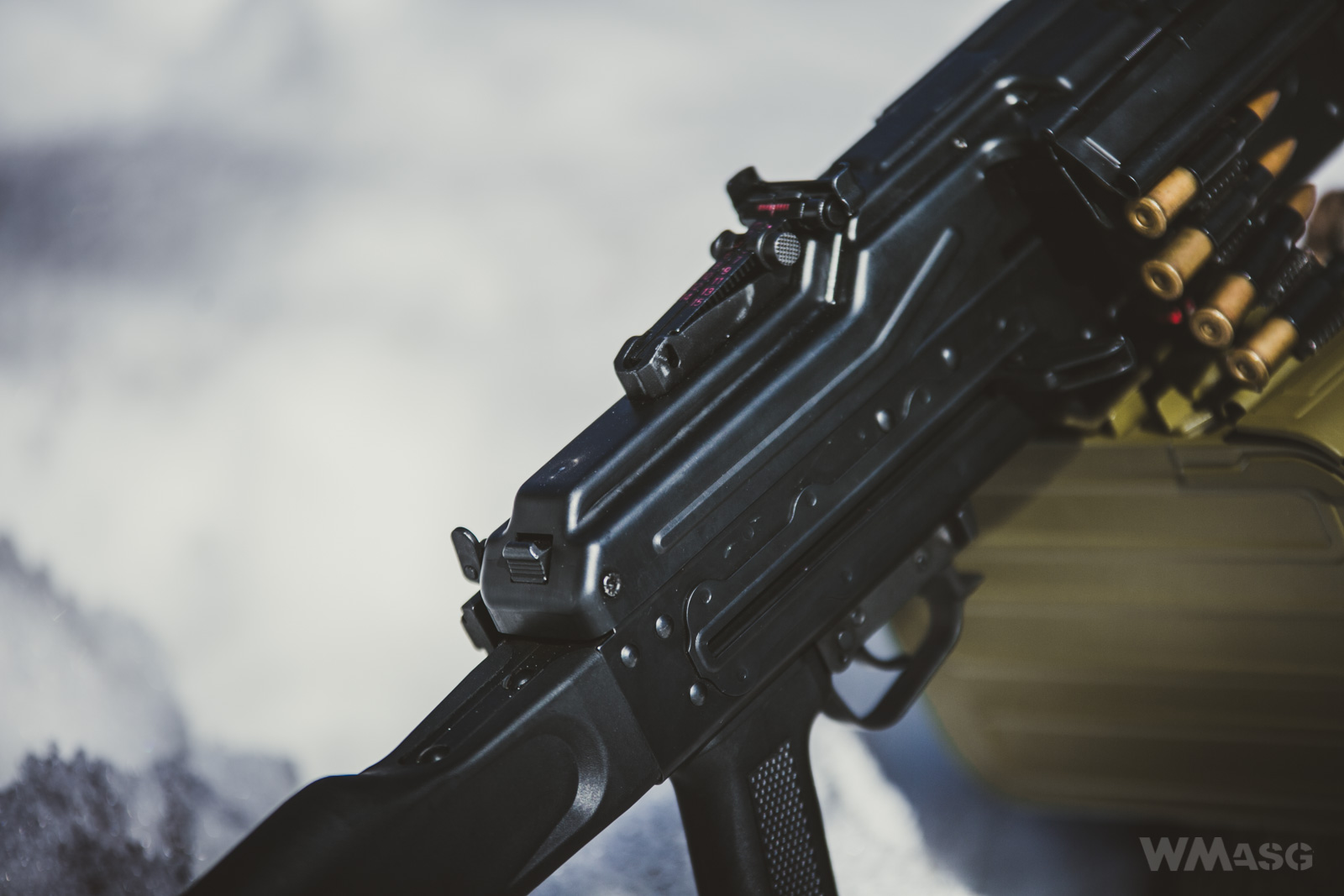
Further towards the barrel exit - a characteristic fixed transport handle and a bipod placed at the front. In the opinion of the reenactor, the replica's grip has a slightly different shape than the original. The top and bottom should be straight.
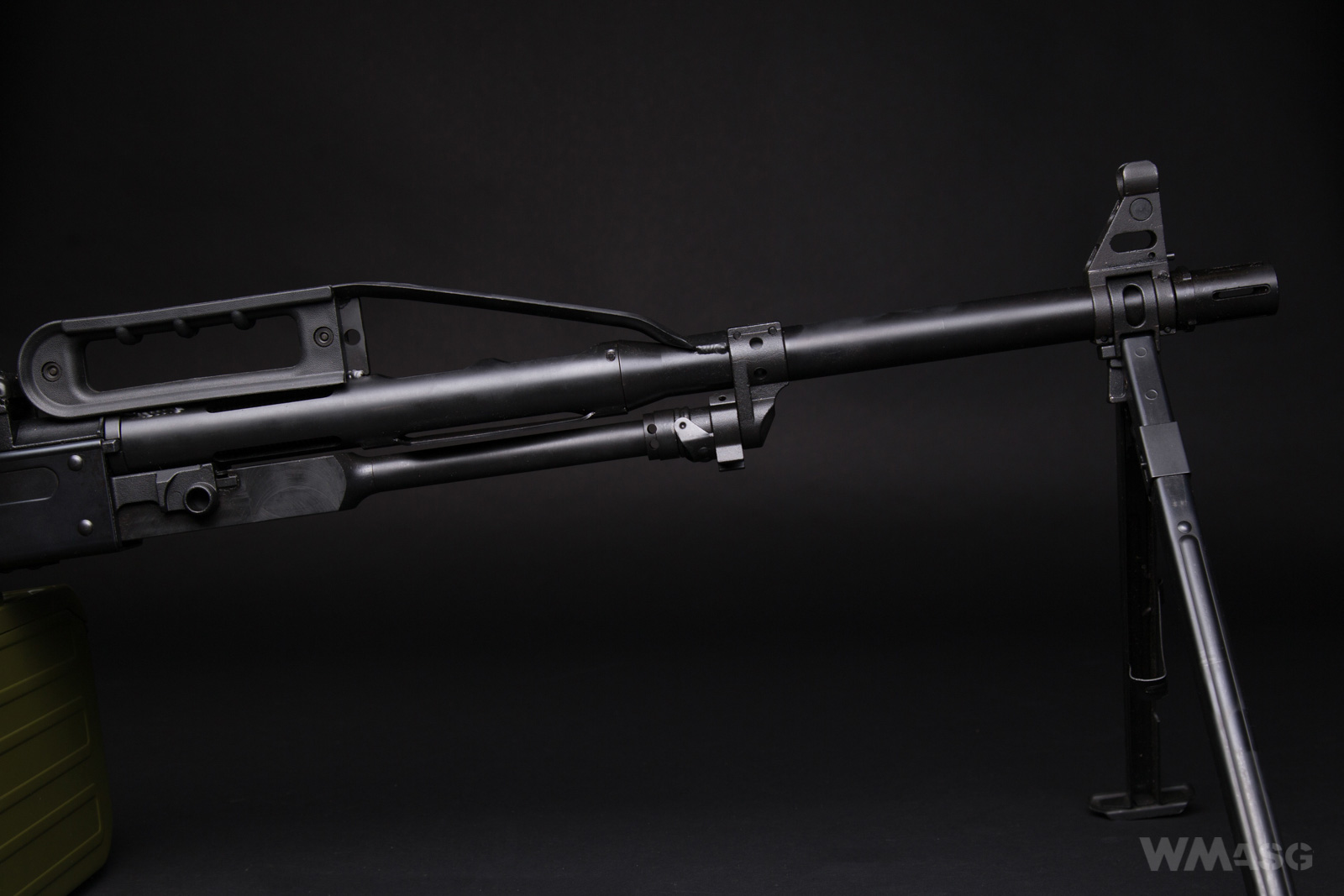
The part inclined towards the barrel, in the original gun, is intended to facilitate aiming by limiting haze effect caused by hot air rising from the barrel. Directly under this part there are ports that suck in the air used to cool the barrel.
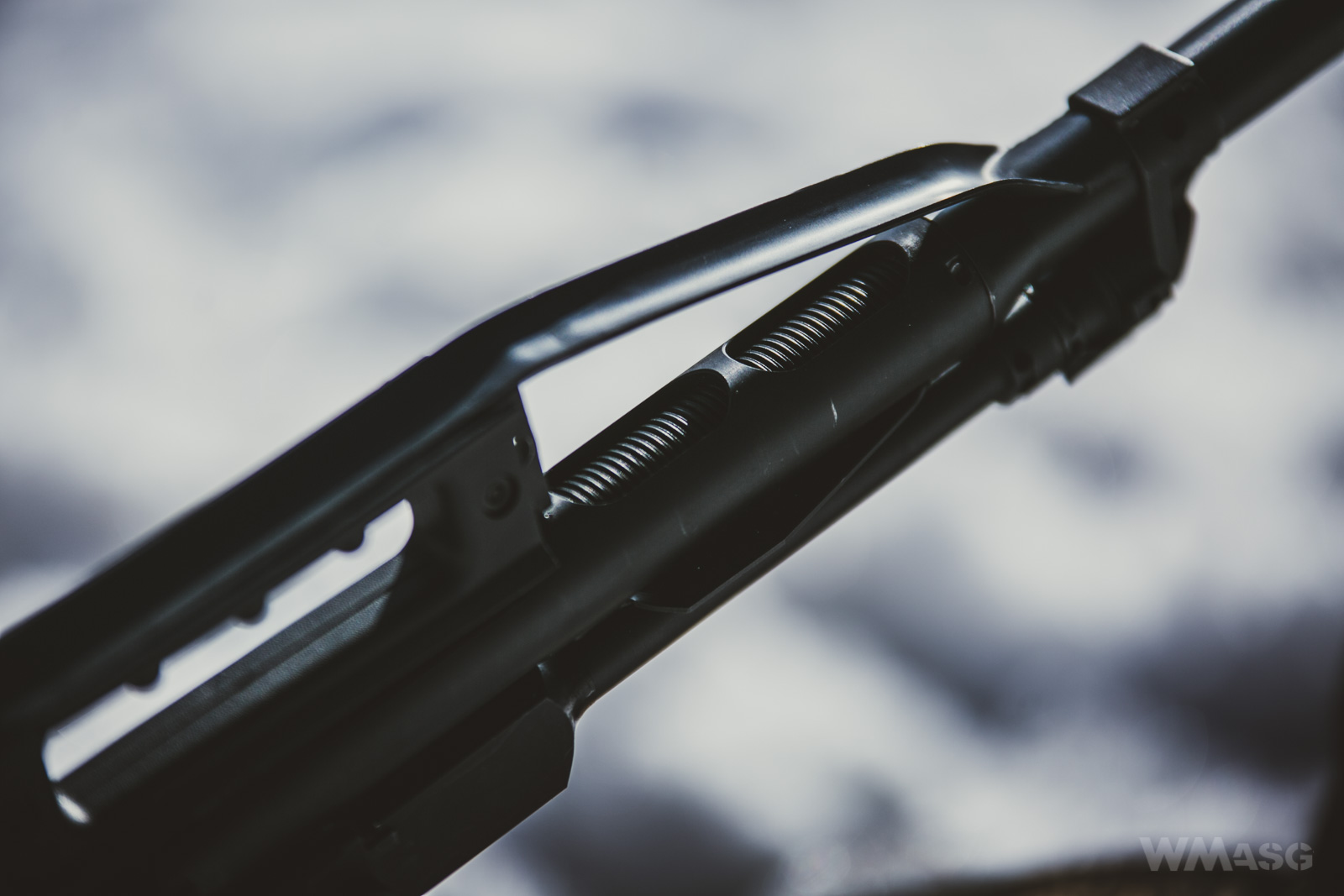
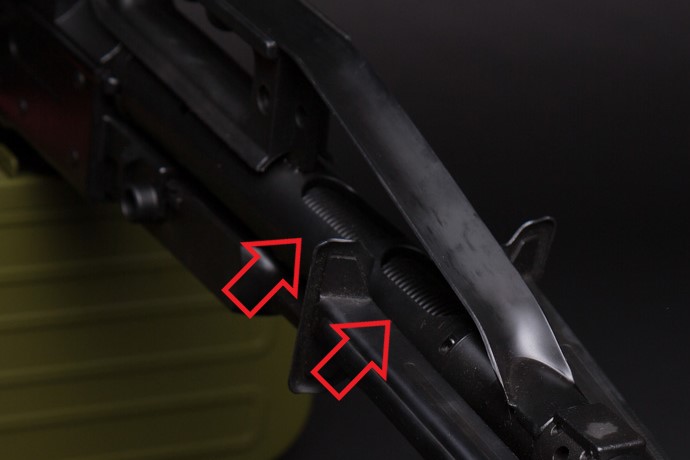
In general, the barrel cooling system is moderately faithfully recreated in the replica. The barrel has cooling ribs and is closed in an additional steel jacket in which the cooling air flows through the openings shown above (of course only in the original). The ribs on the barrel of the replica have a square cross-section, and the expert says that they should have a shape of a cone.
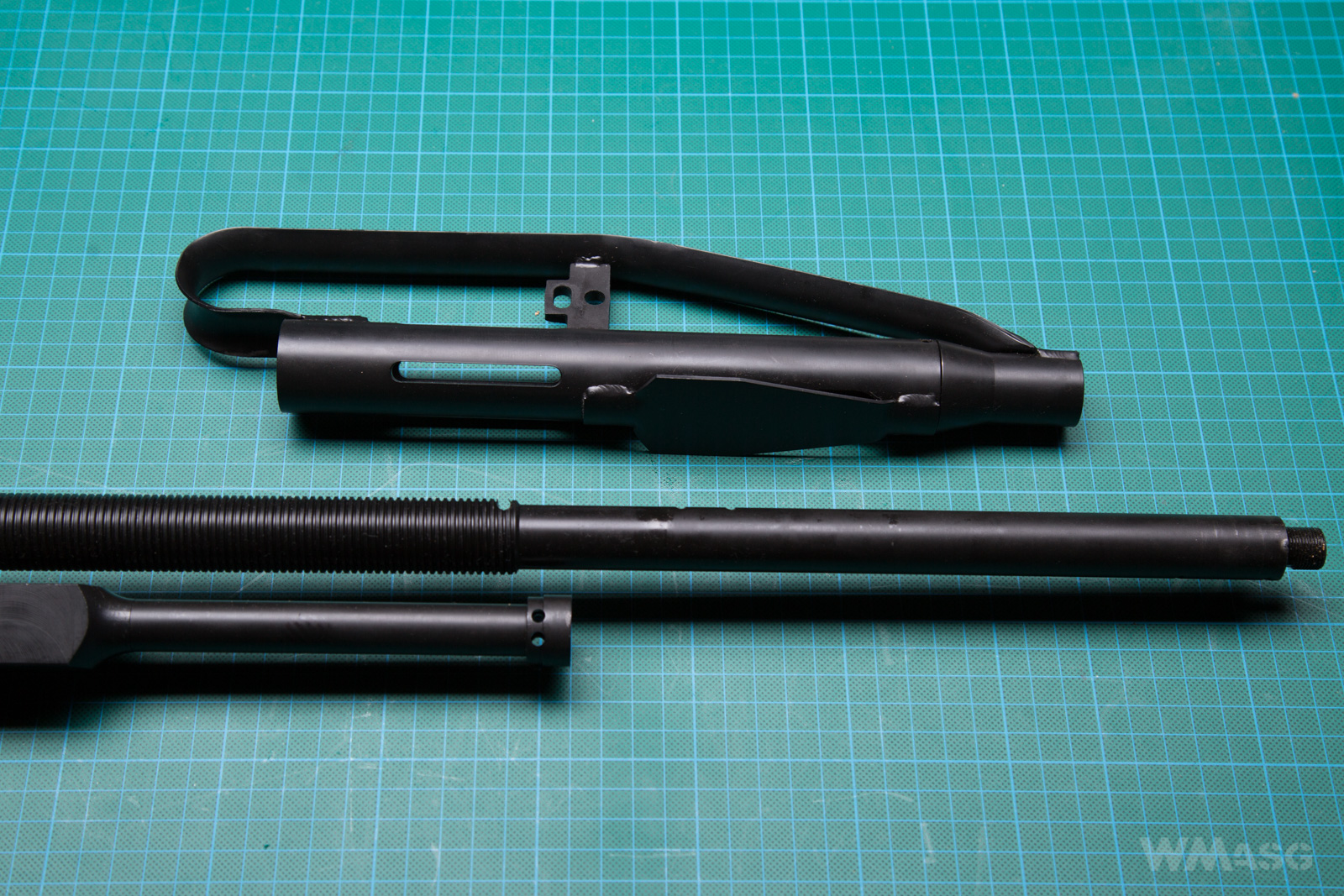
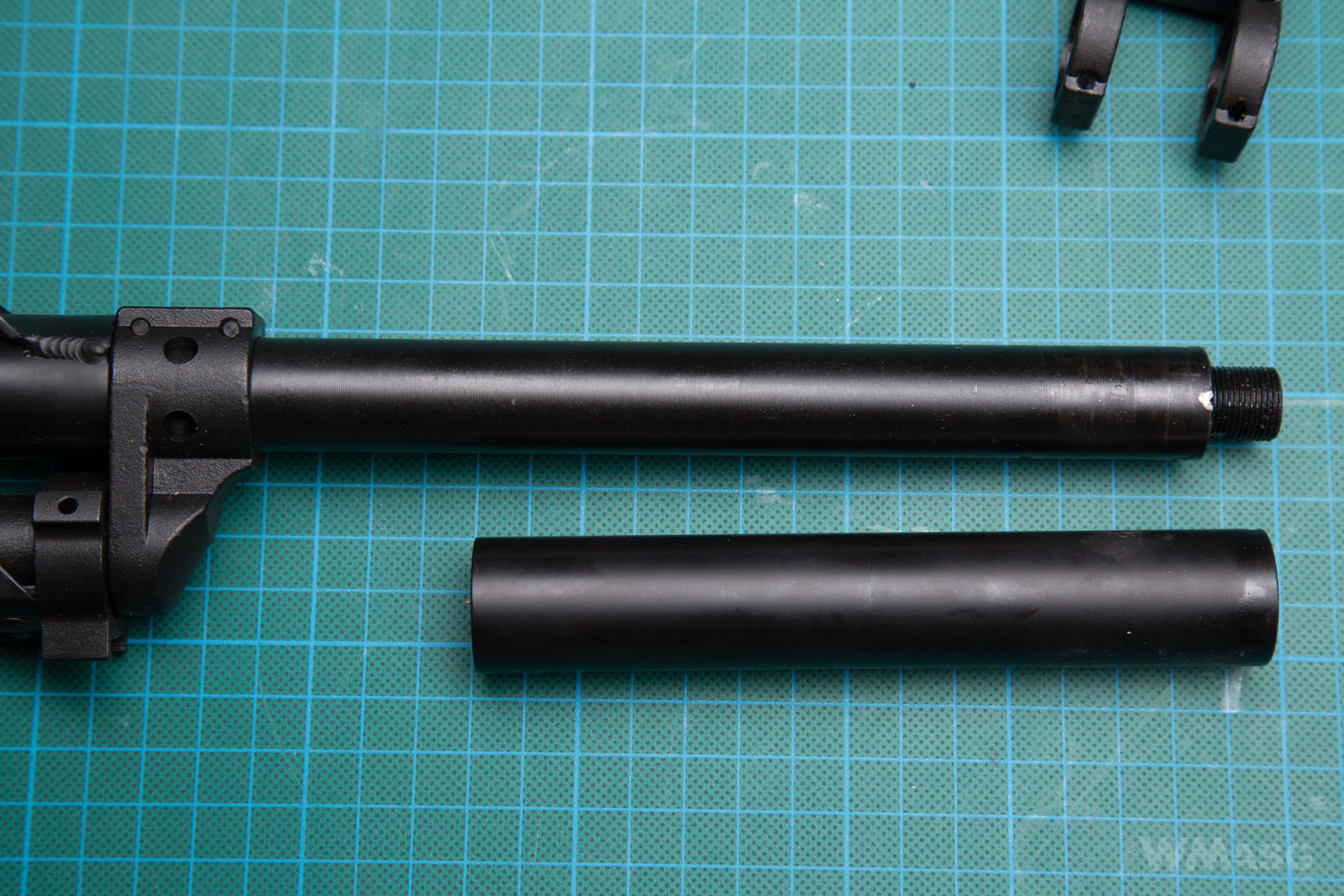
The heated air leaves the "jacket" through special openings in the flash hider.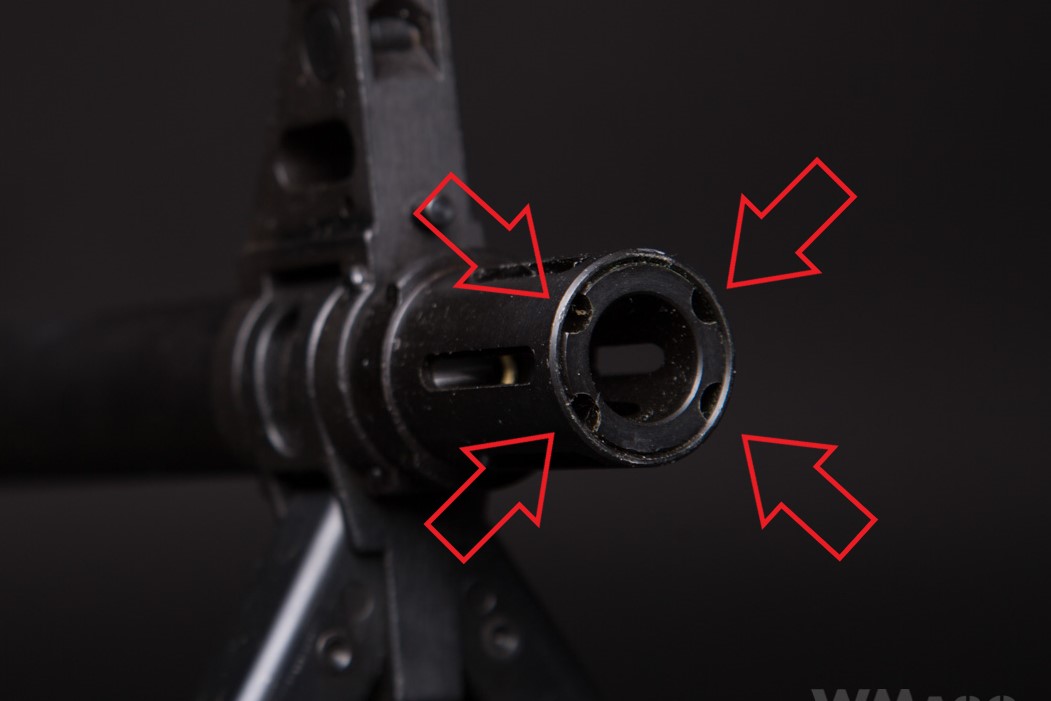
The part under the barrel is a dummy gas tube.
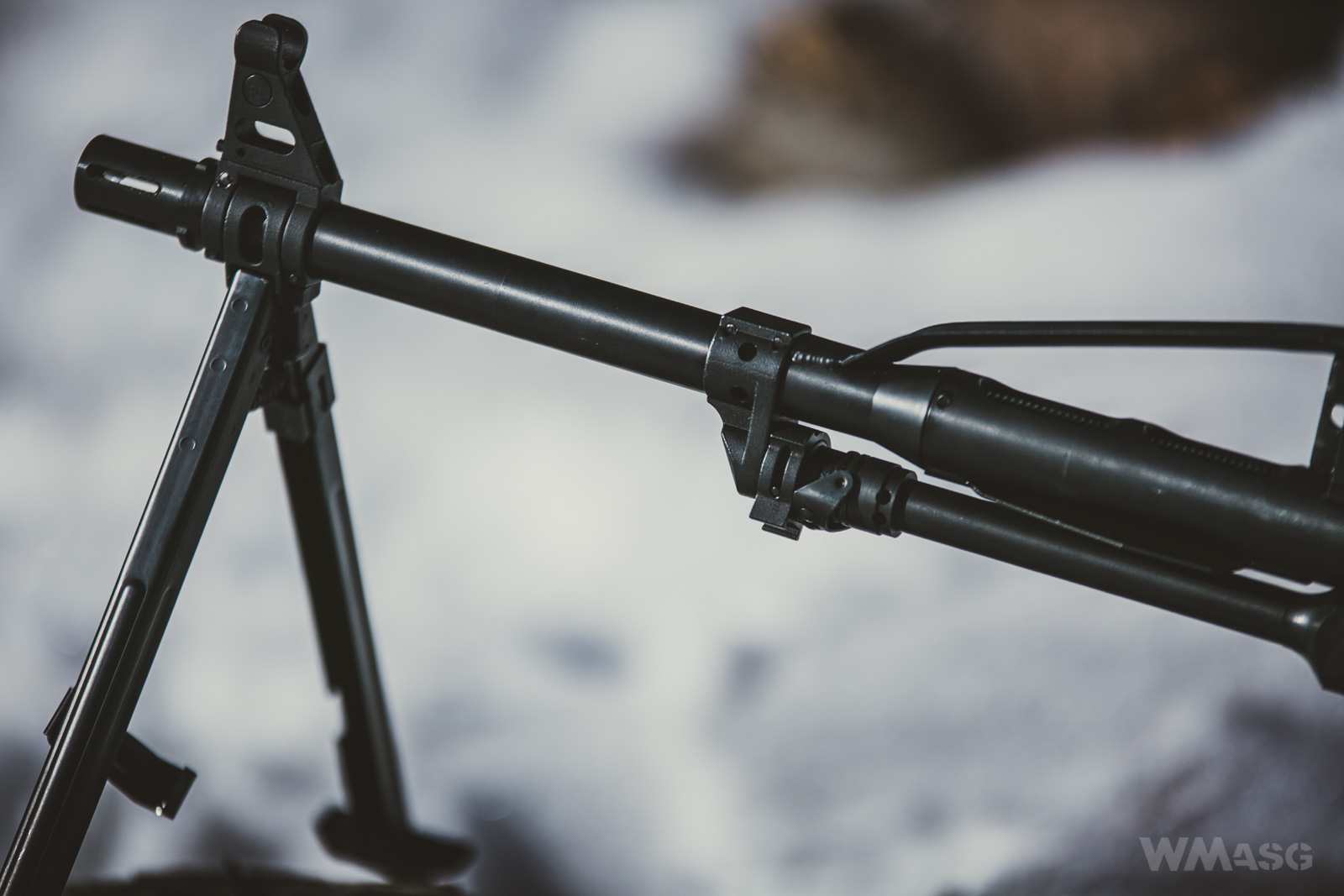
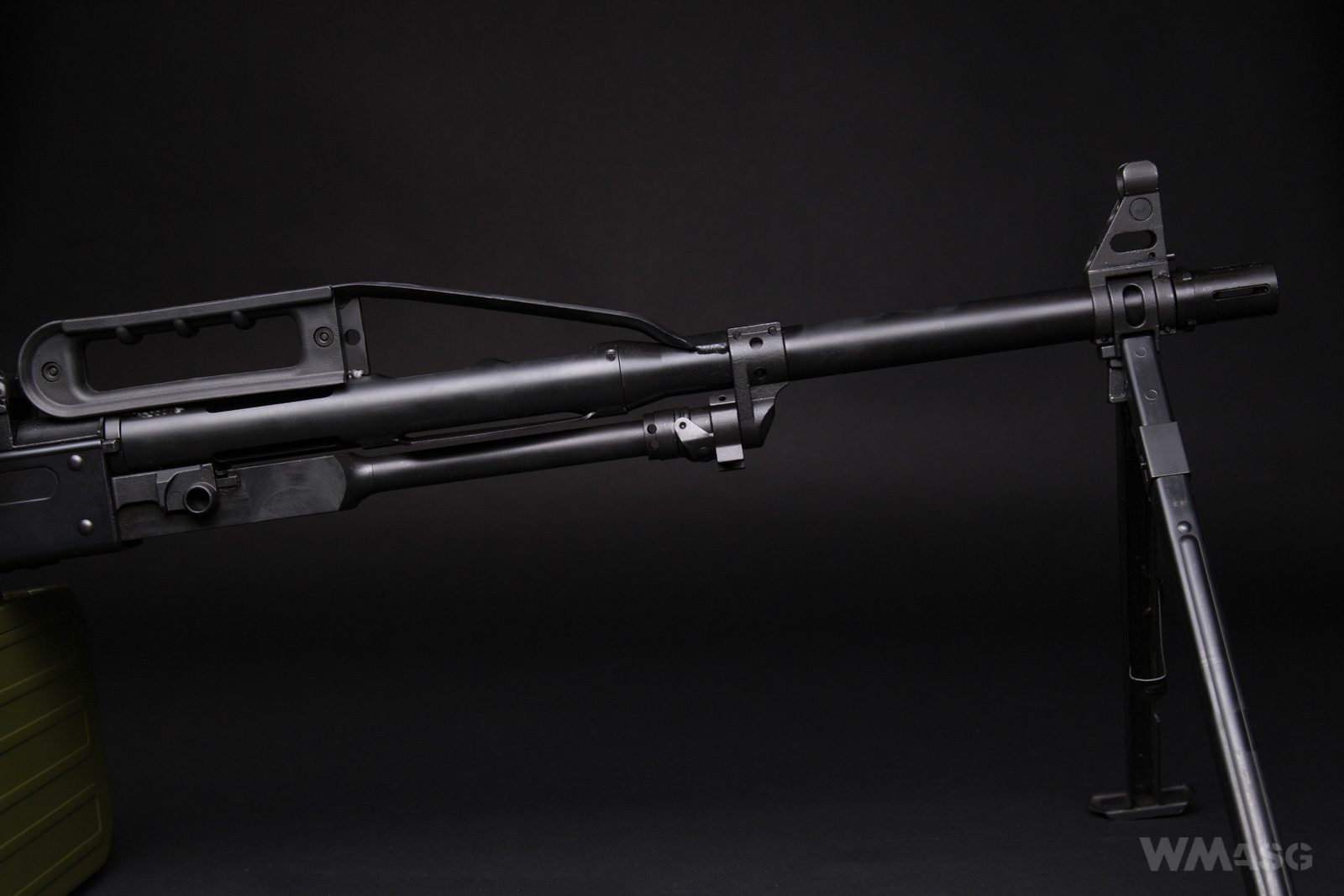
Between the tube and the gas block is a dummy gas valve.
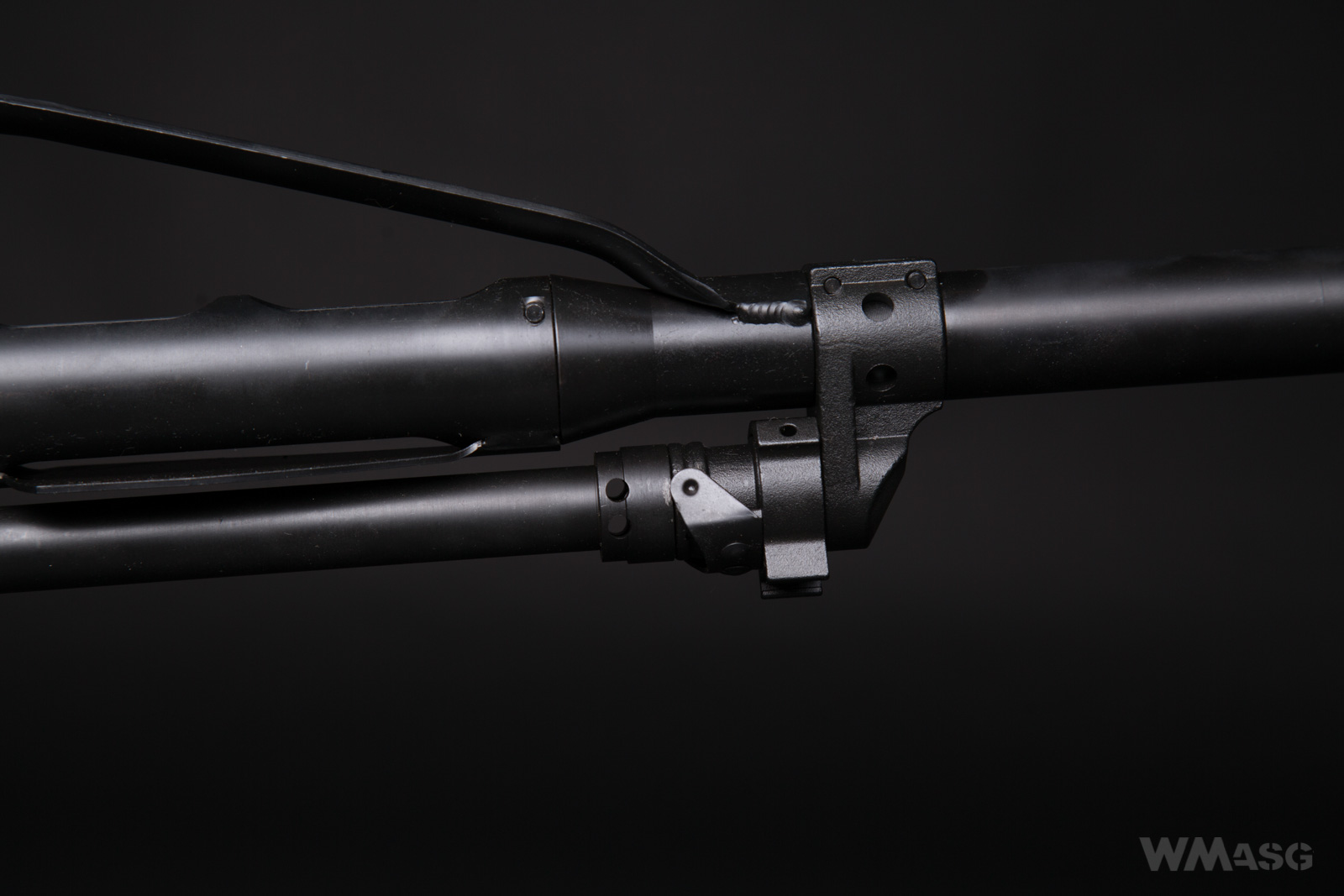
The valve can be turned - it has three settings. In the original descriptions are filled with white paint.
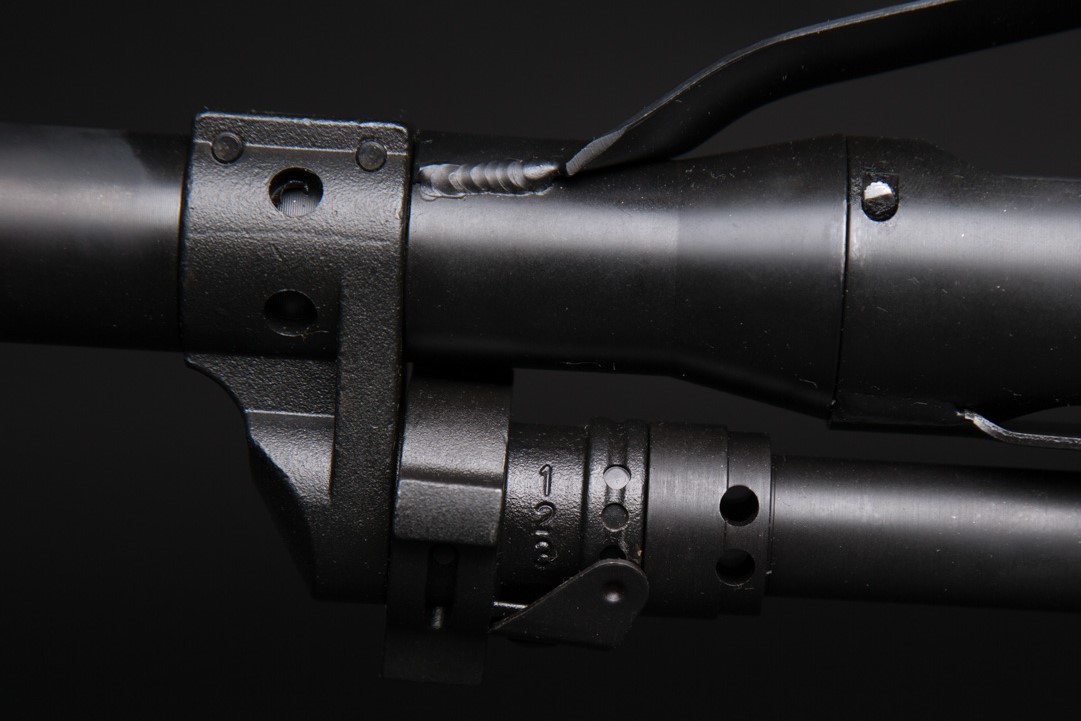
A keen eye will notice one more familiar looking part.
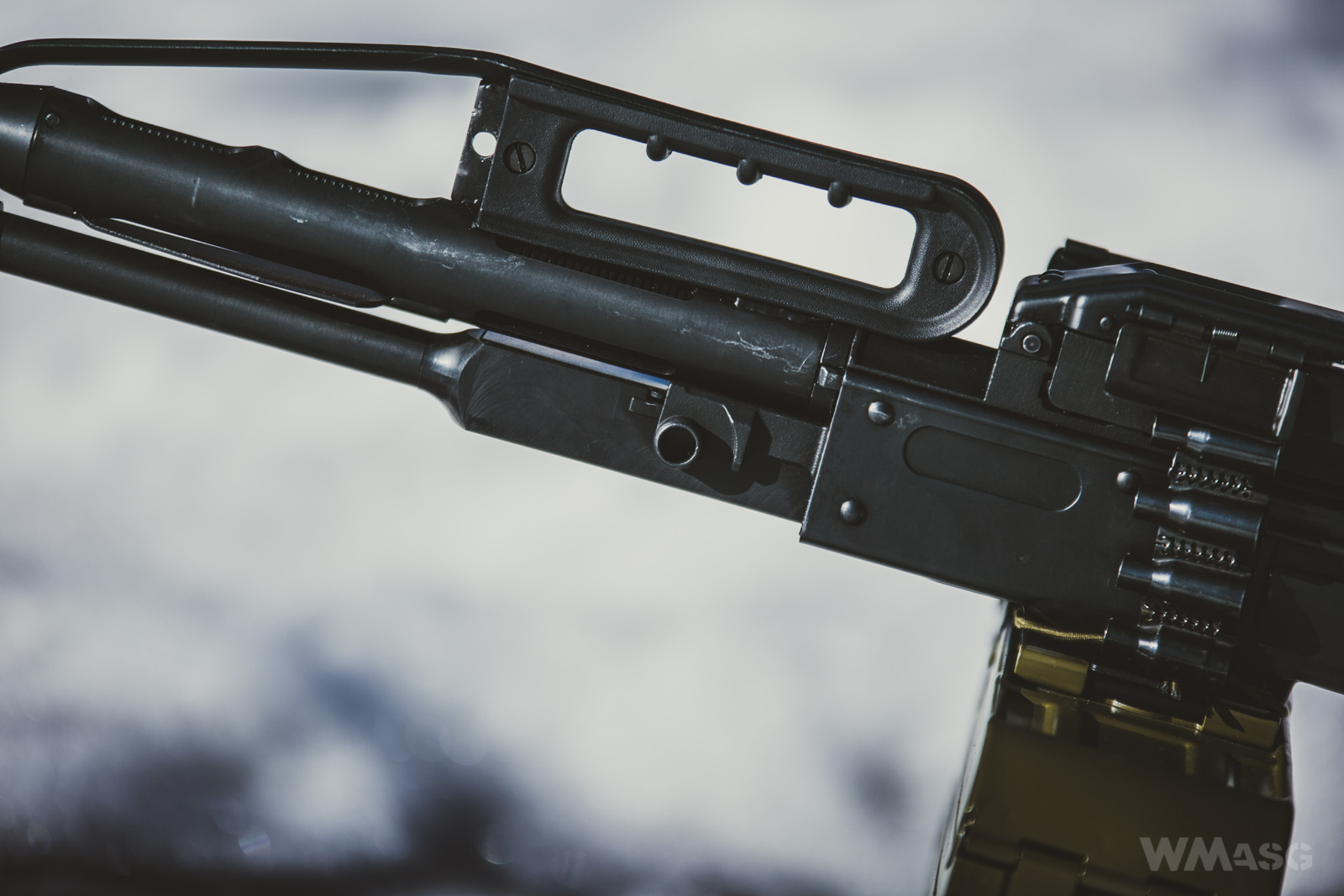
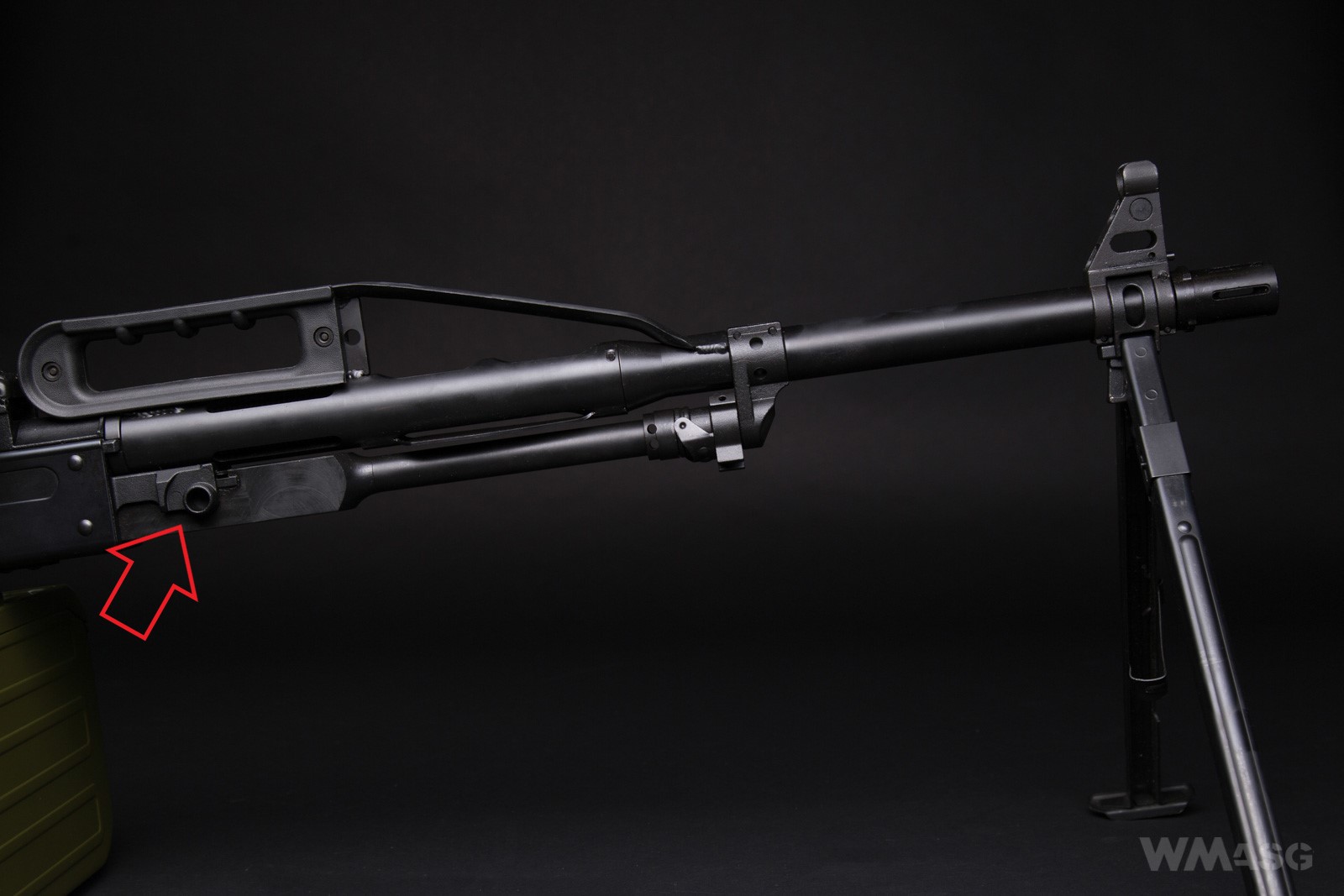
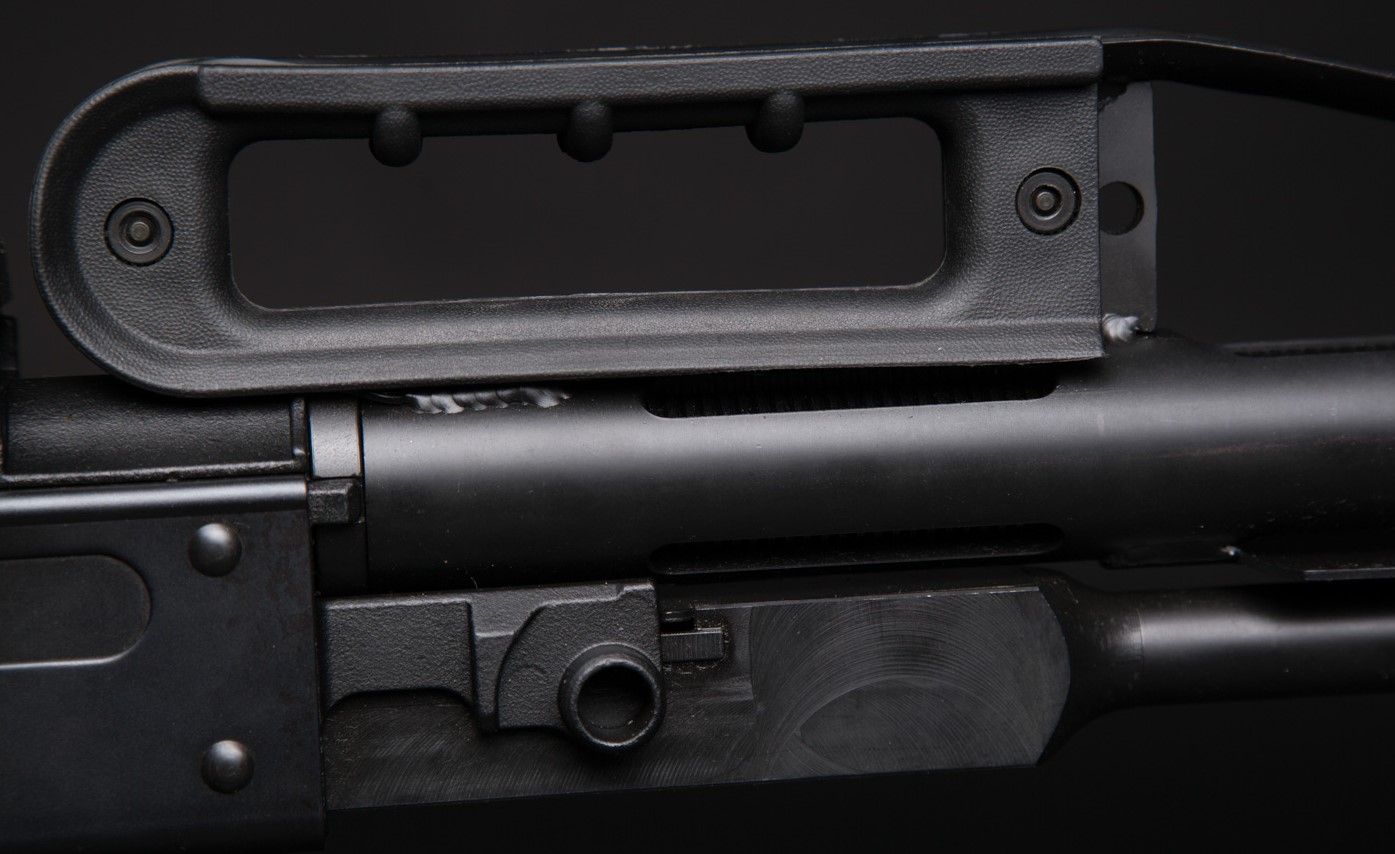
It is not a QD mounting point for a carrying sling, but an assembly point inherited from the PKM used to mount it on a tripod or a pintle mount of a vehicle. The mounting is symmetrical on both sides of the weapon. The standard AK carrying sling can be attached, for example, to the place indicated by the red arrow
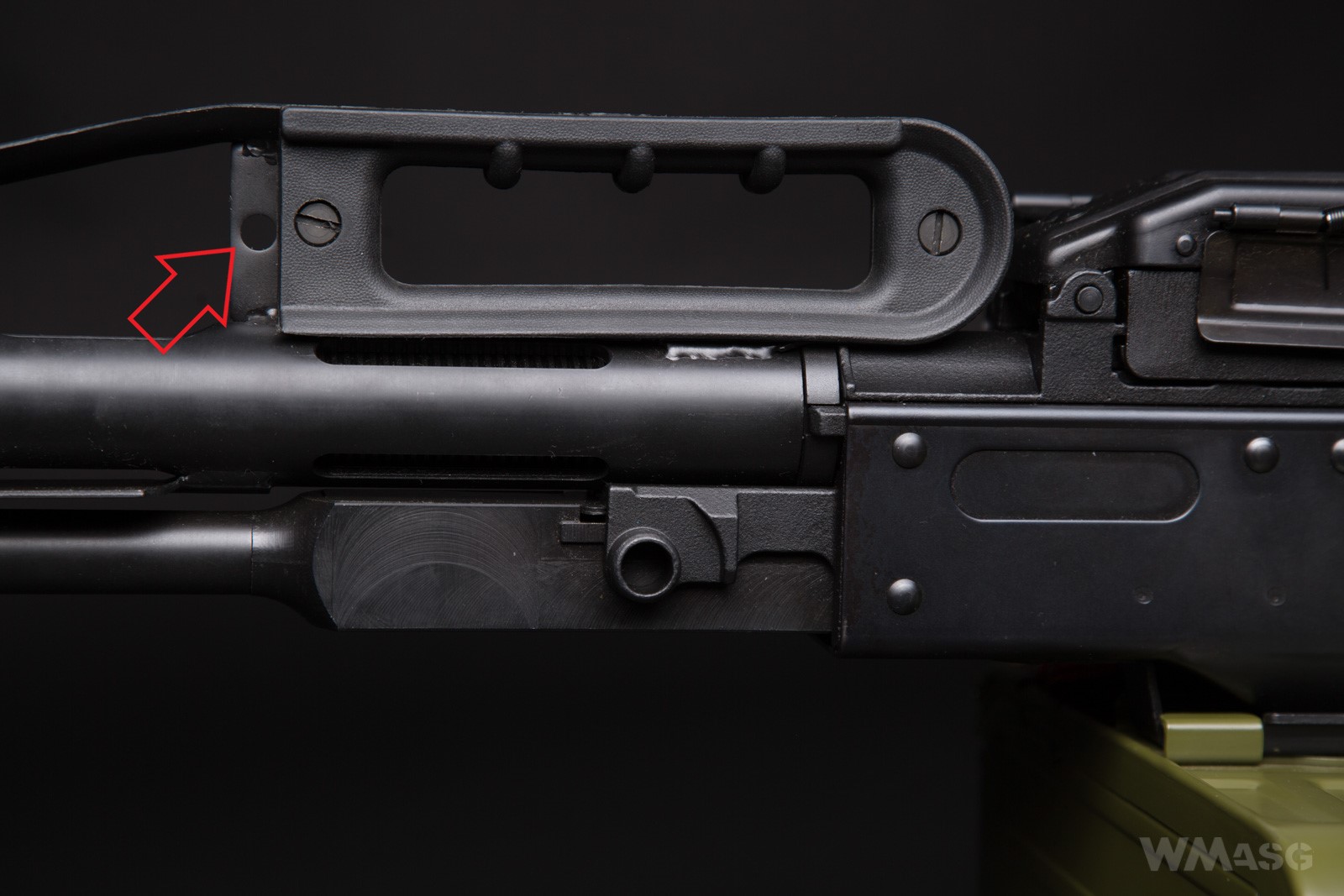
One of the parts that distinguishes the Pecheneg from the PKM is the integrated inseparable bipod. It is placed at the very end of the barrel, between the mounts of the base of the front sight.
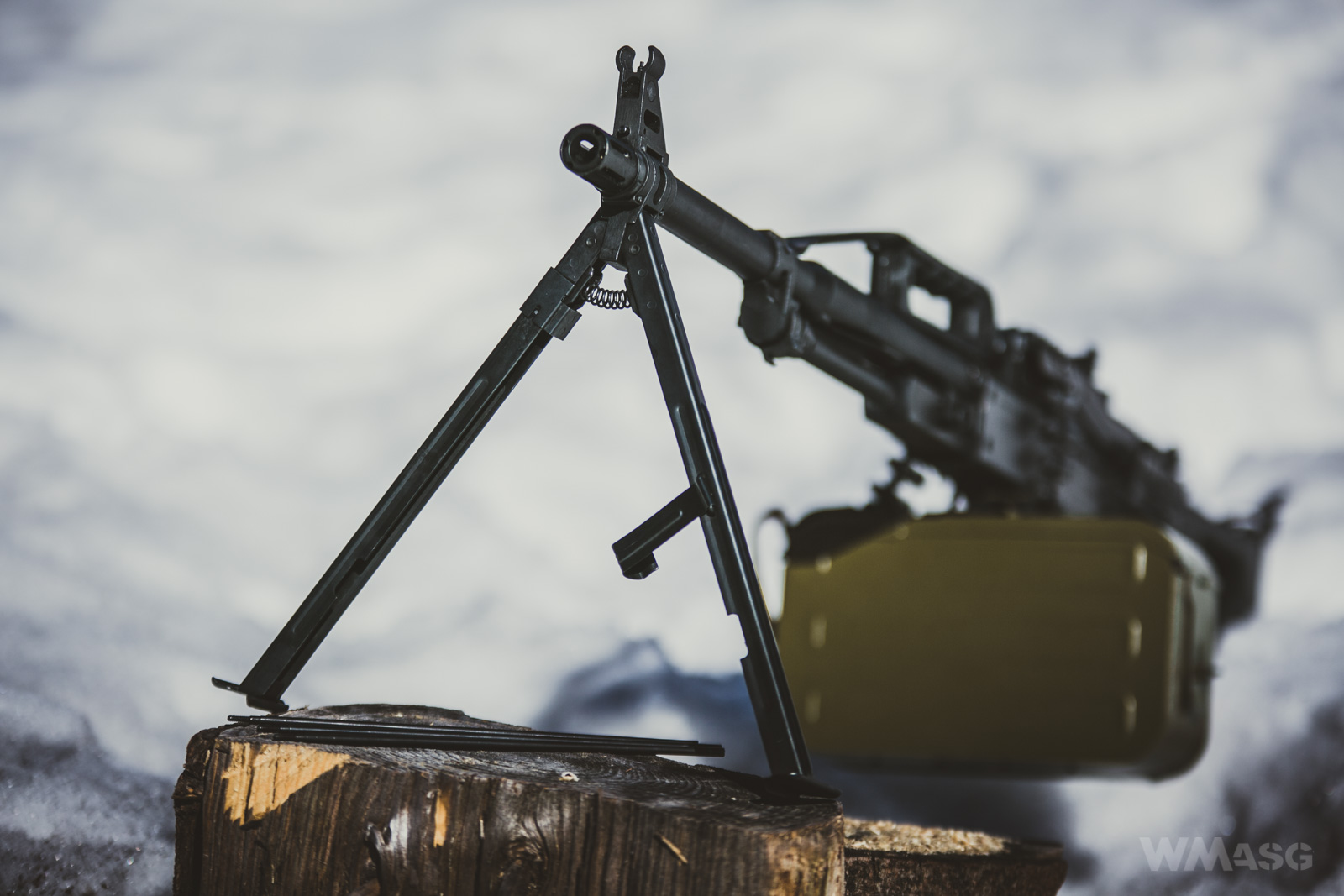
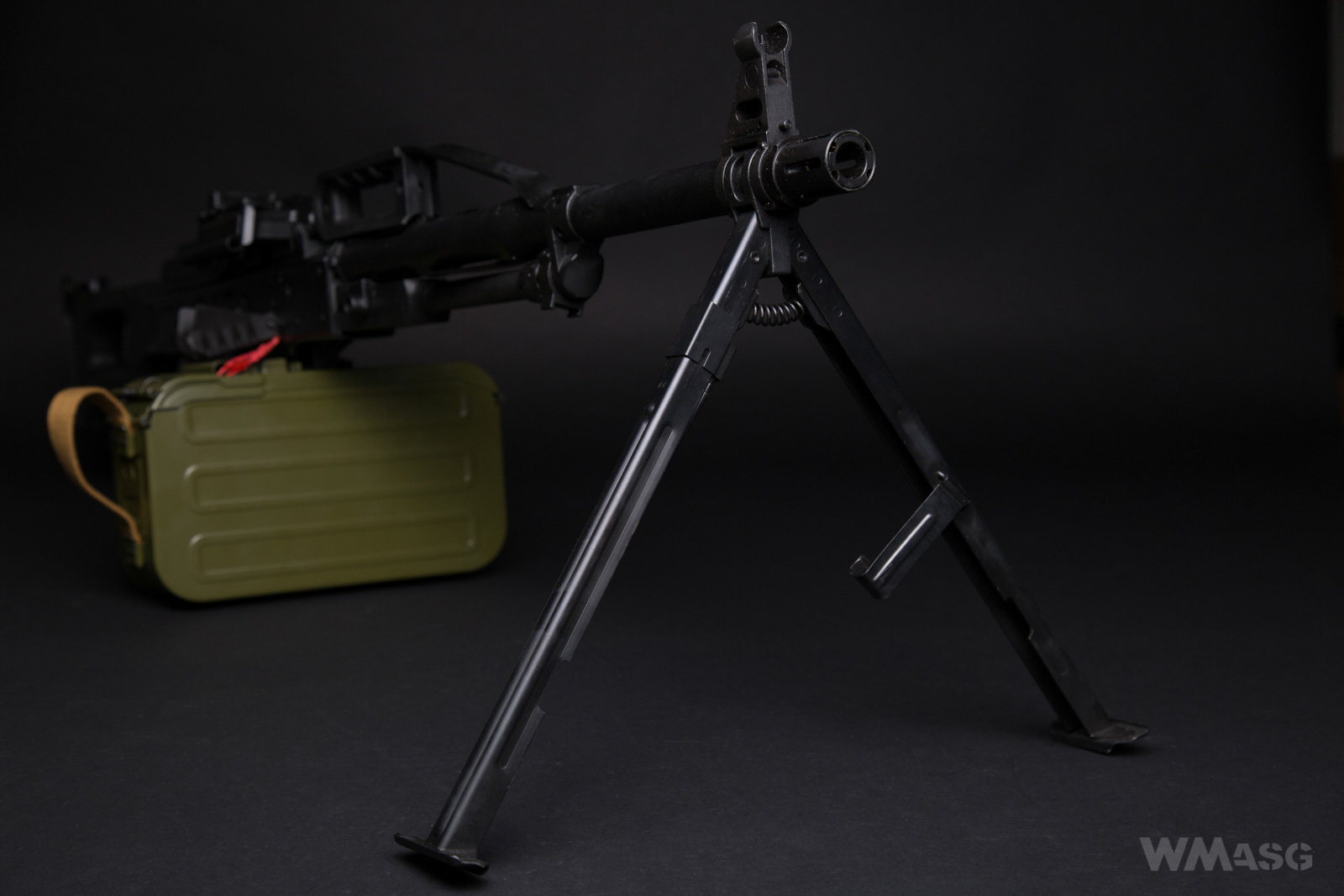
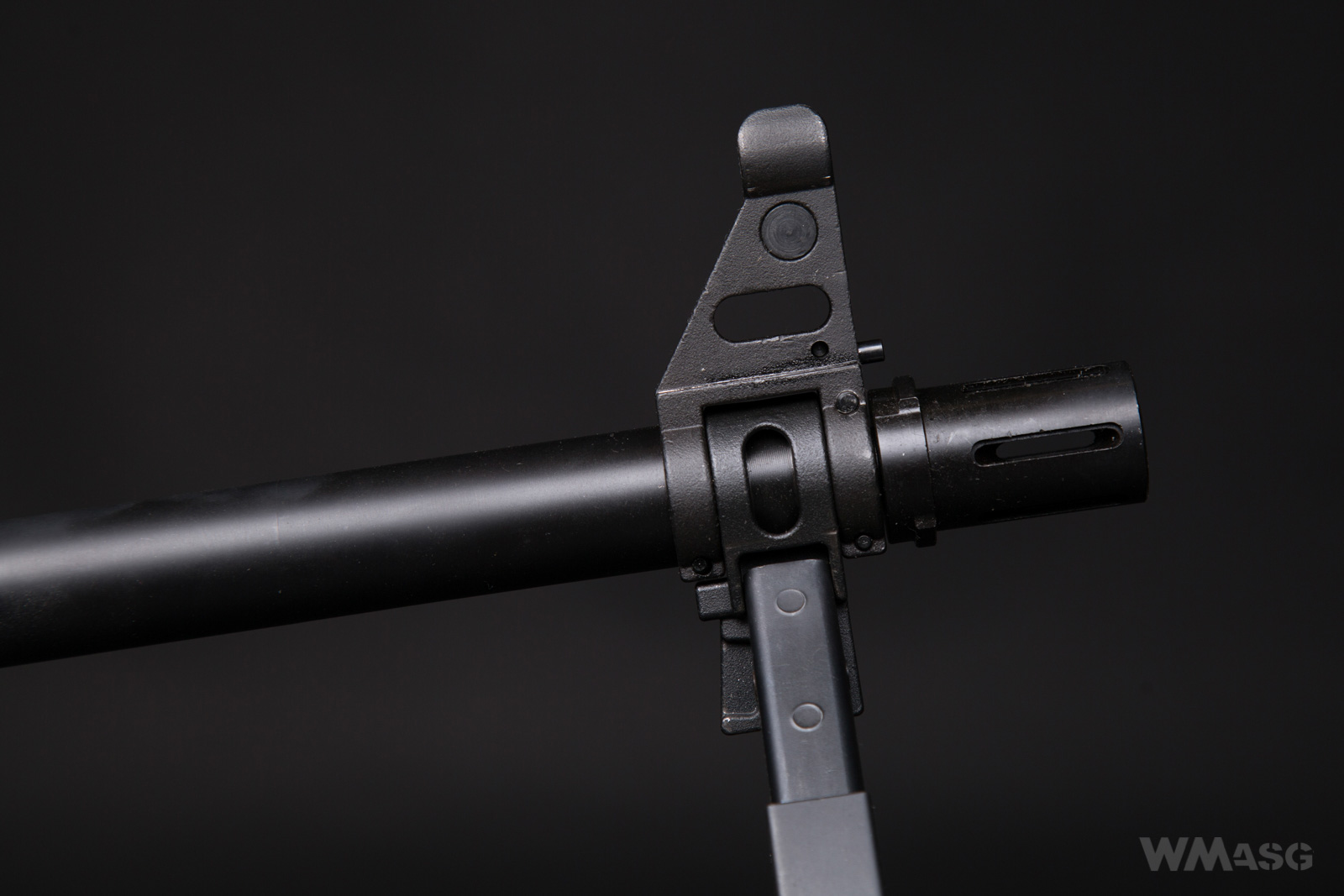
The whole element is made of steel. A connecting clip is placed on the left leg. Inside the right one, a three-piece dummy cleaning rod is hidden. The photo shows a latch that holds parts of the rod inside this compartment.
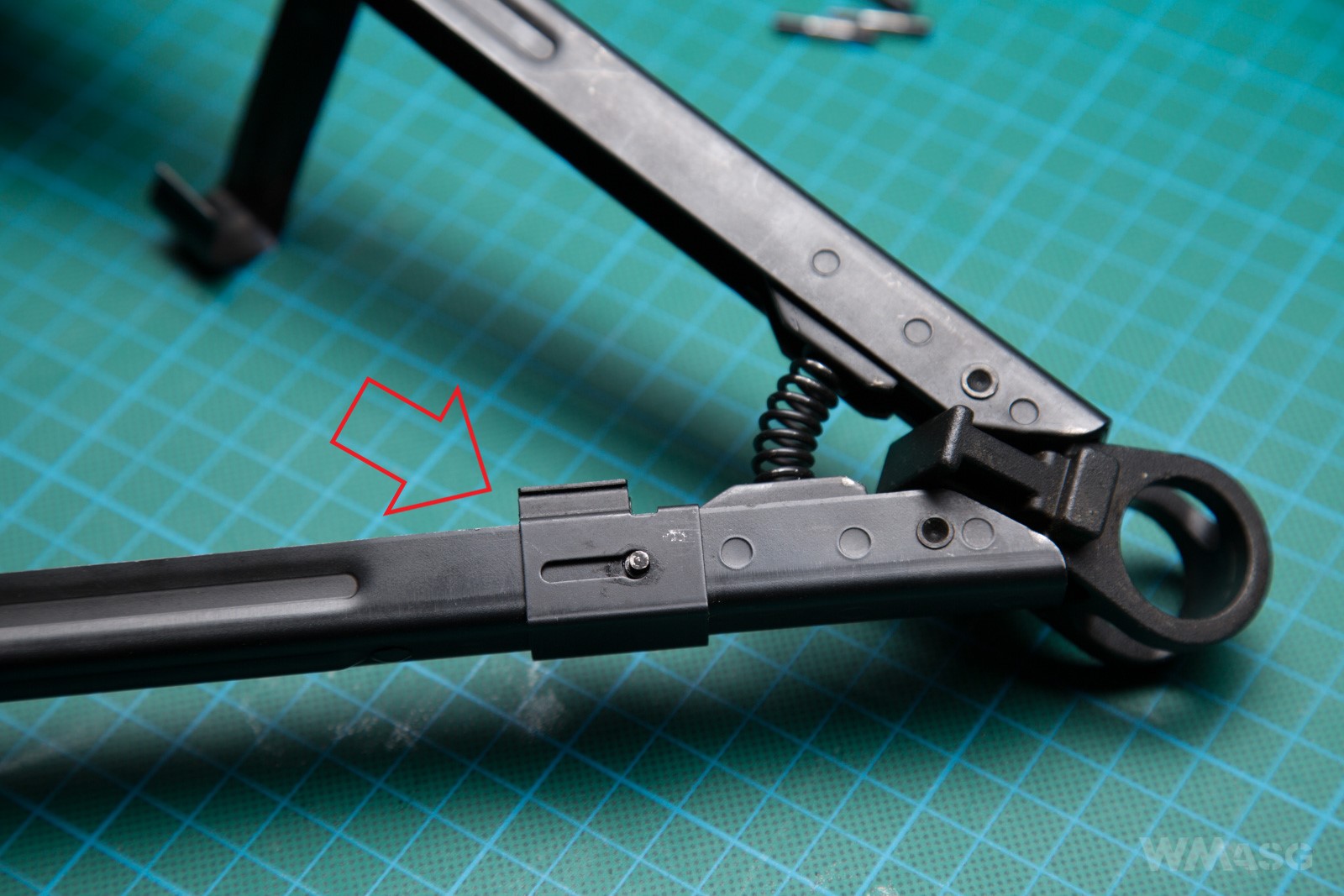
The cleaning rod: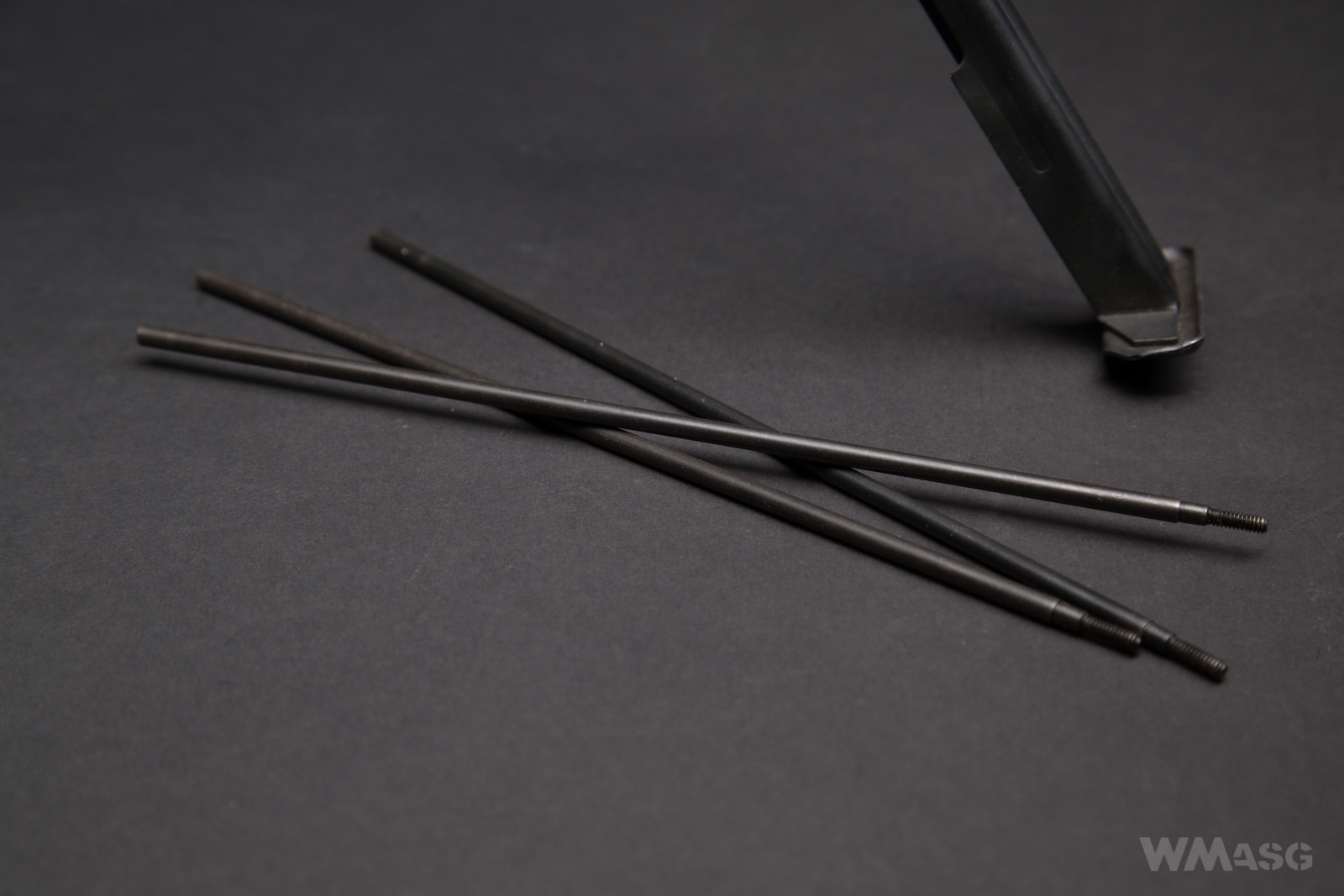
A close-up view of one end.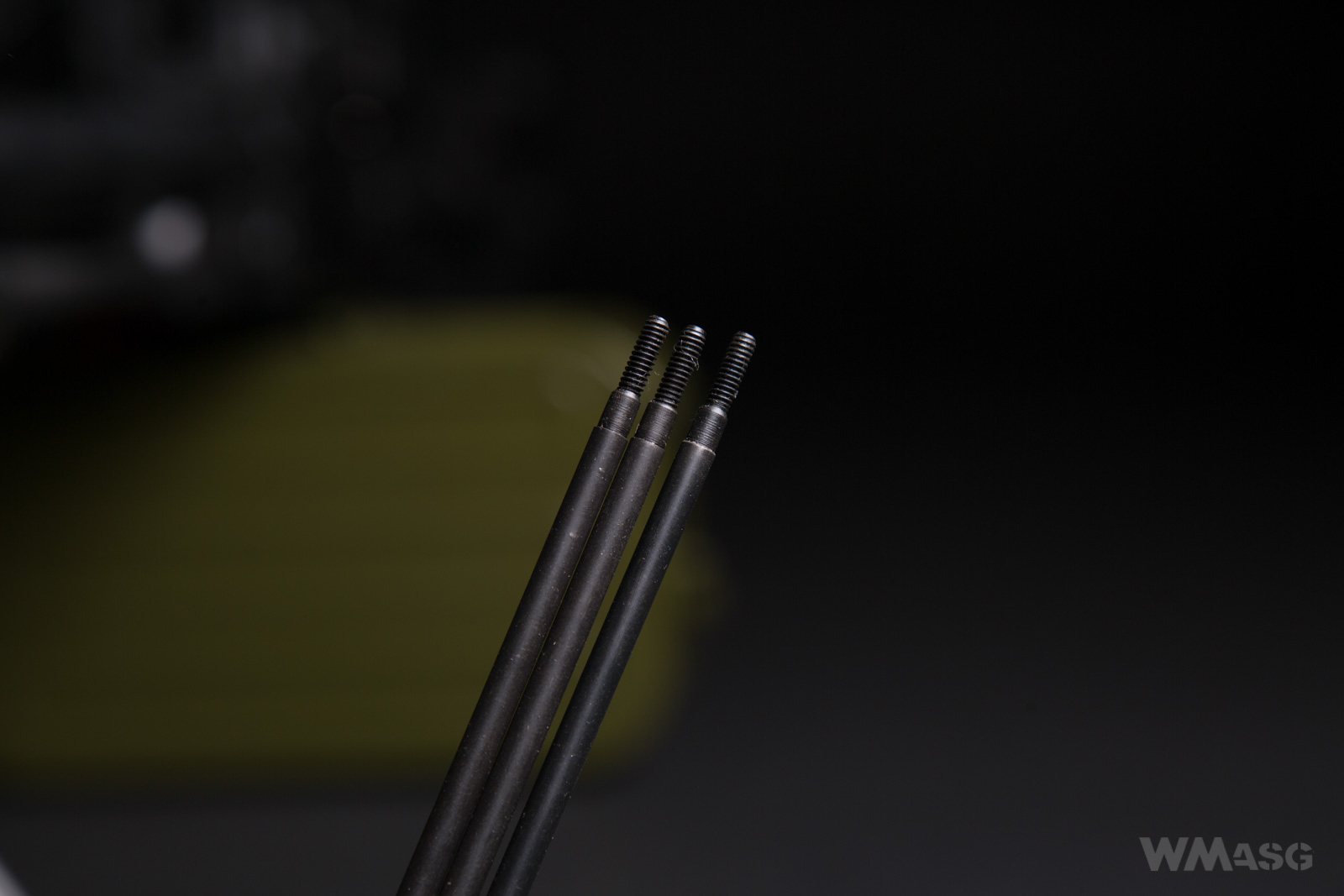
And the view of the other side. Unfortunately - something is missing here.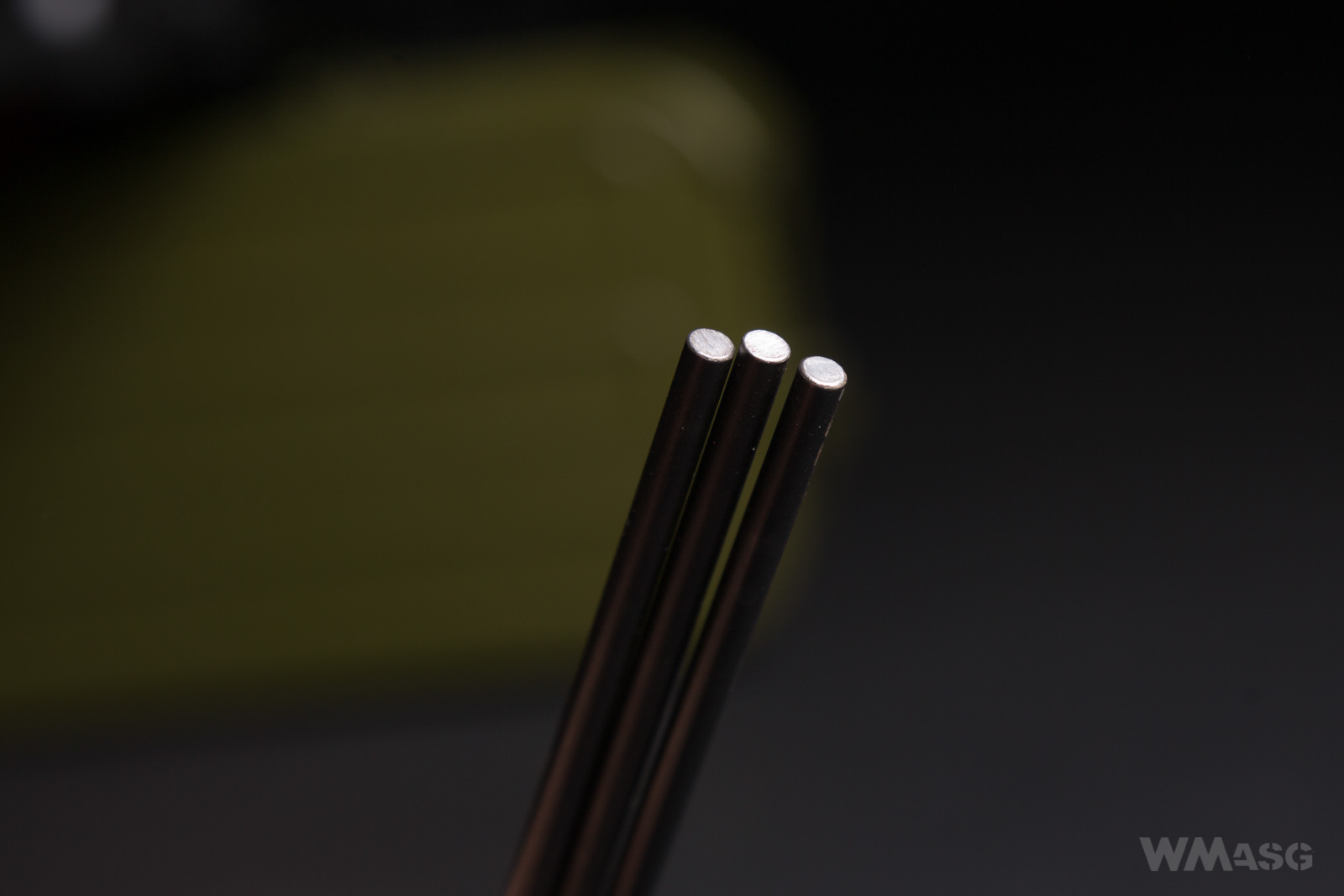
The bipod is folded backwards. In this position it has small but noticeable slack.
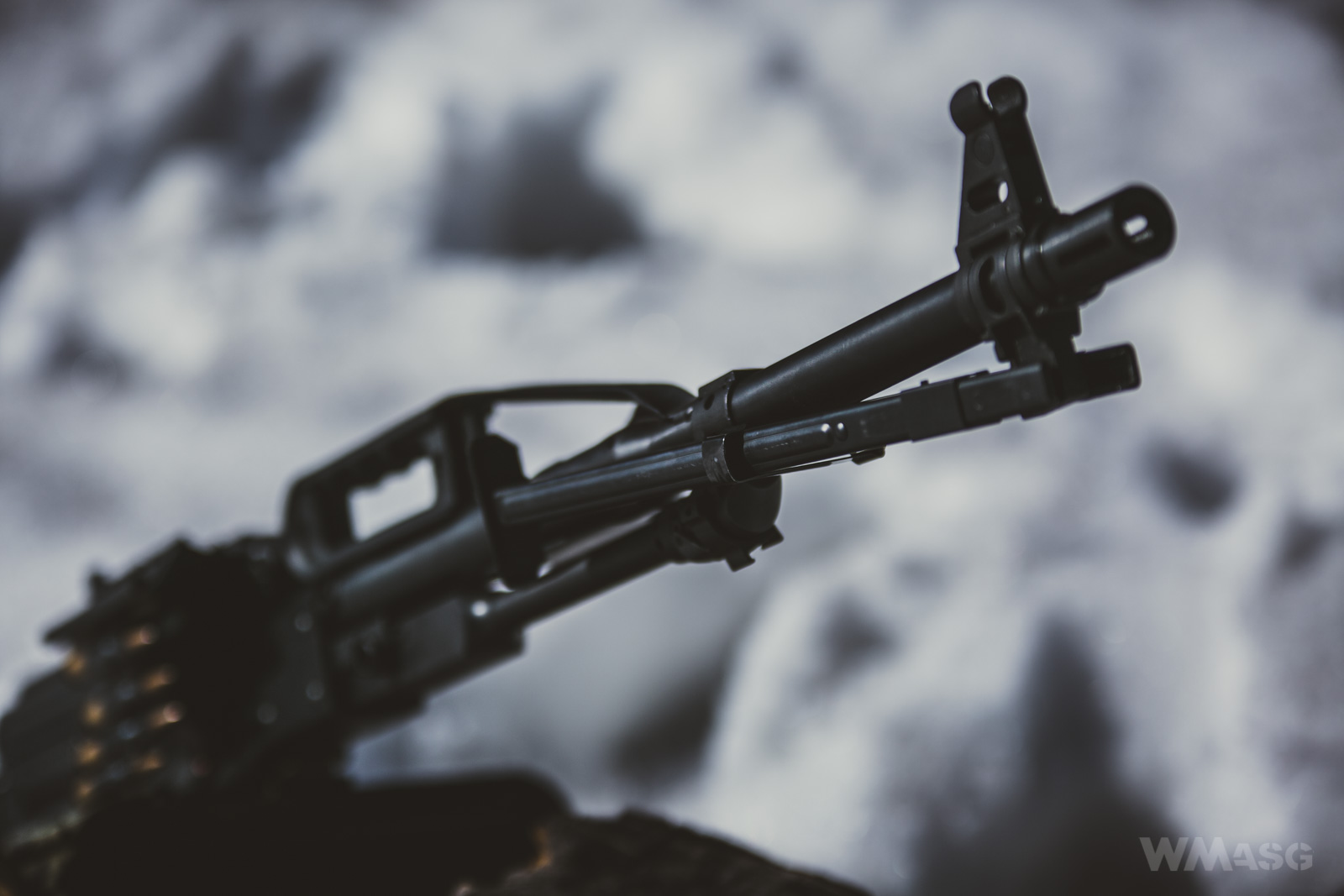
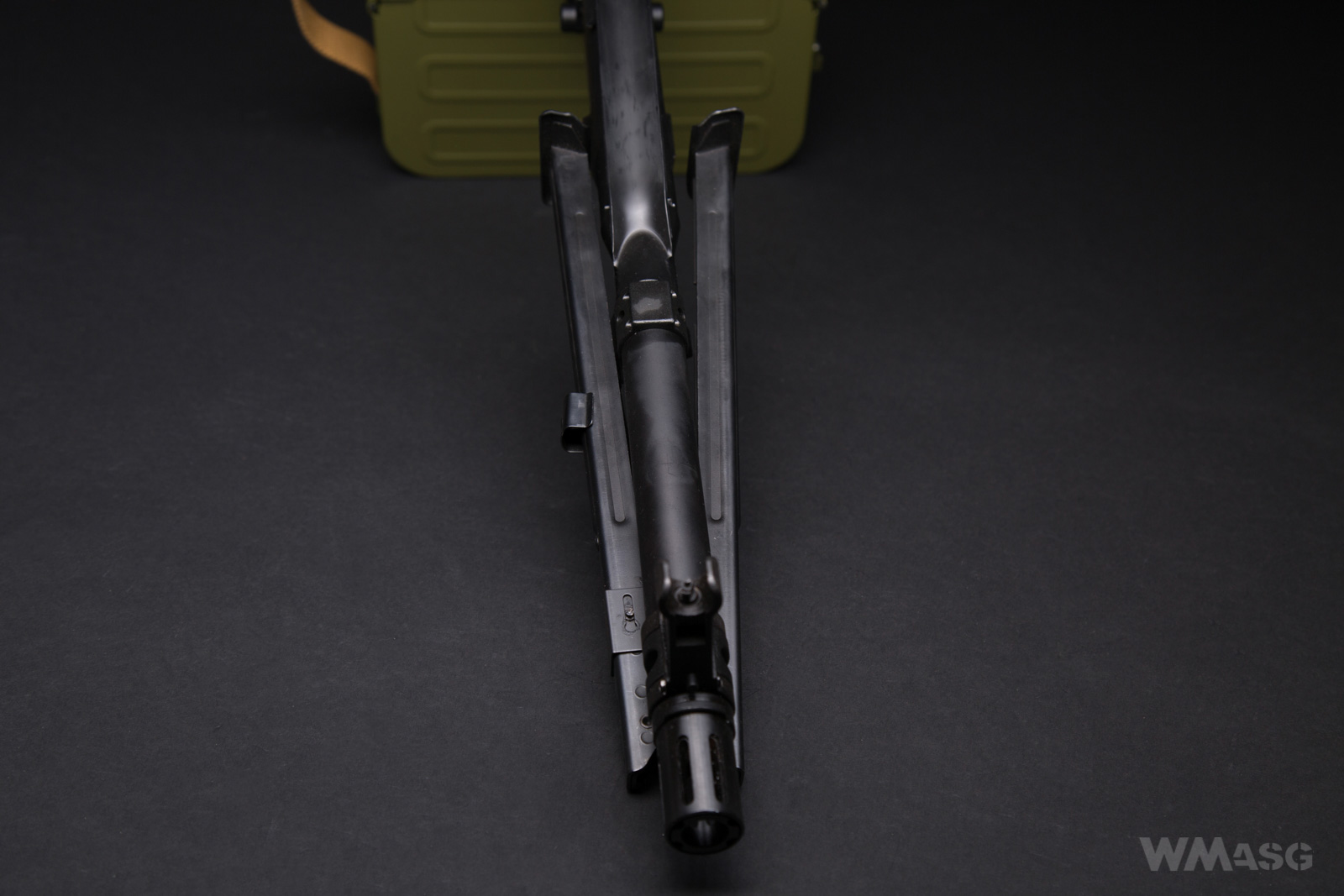
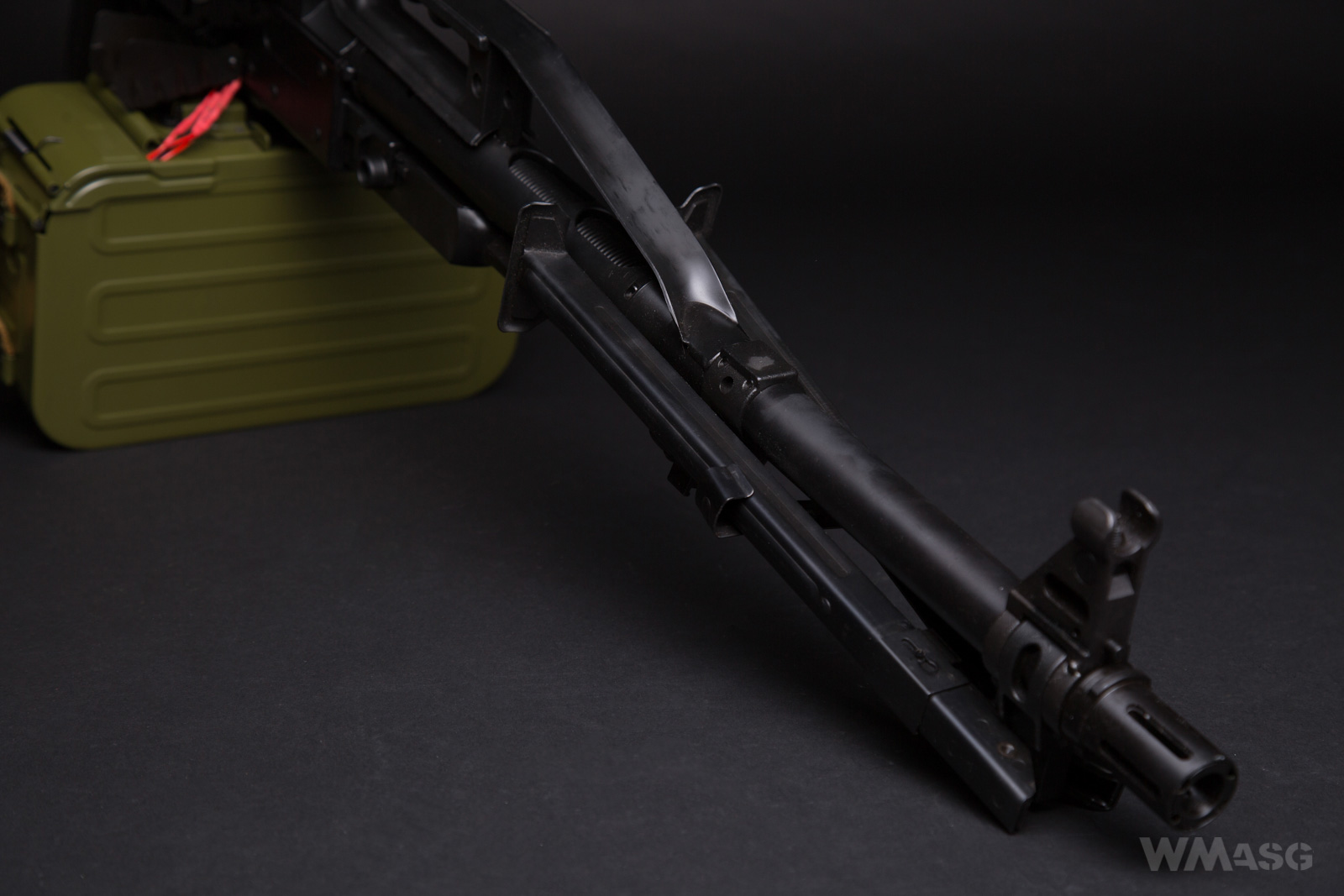
A steel box magazine mounting point is riveted at the bottom of the receiver. The two counterclockwise hex screws, mentioned at the beginning of the text and visible on the left, are securing the gearbox in the proper position. In the center of the mounting point there is a visible hole through BBs are fed. The electric wires, that do not make the best impression, are led out of the receiver through the hole in its side, just under the guide of the ammunition belt. The wires are thin and, above all, rigid. However, the insulation seems to be resistant to accidental cuts. Due to the use of a simple electronic circuit, there are four wires - two red control wires and two (black and red) that supply power to the motor. The size of the control system forced the use of additional connectors and allows for disconnecting the final section of the installation. The printed circuit board would not fit into the hole in the receiver therefore it is hidden, along with the battery supplying the replica, in the ammunition box.
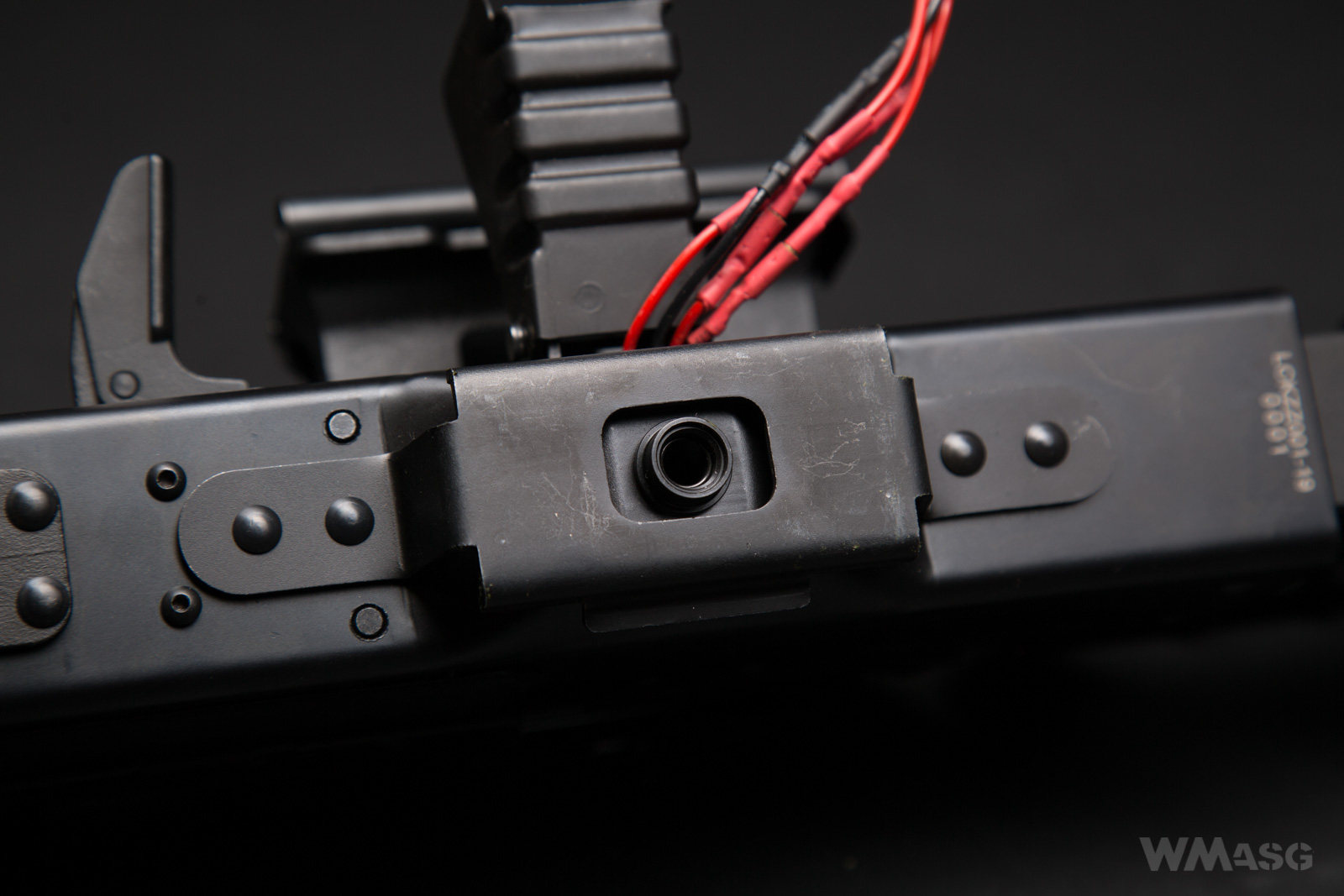
The serial number of the replica was laser engraved somewhat more to the front.
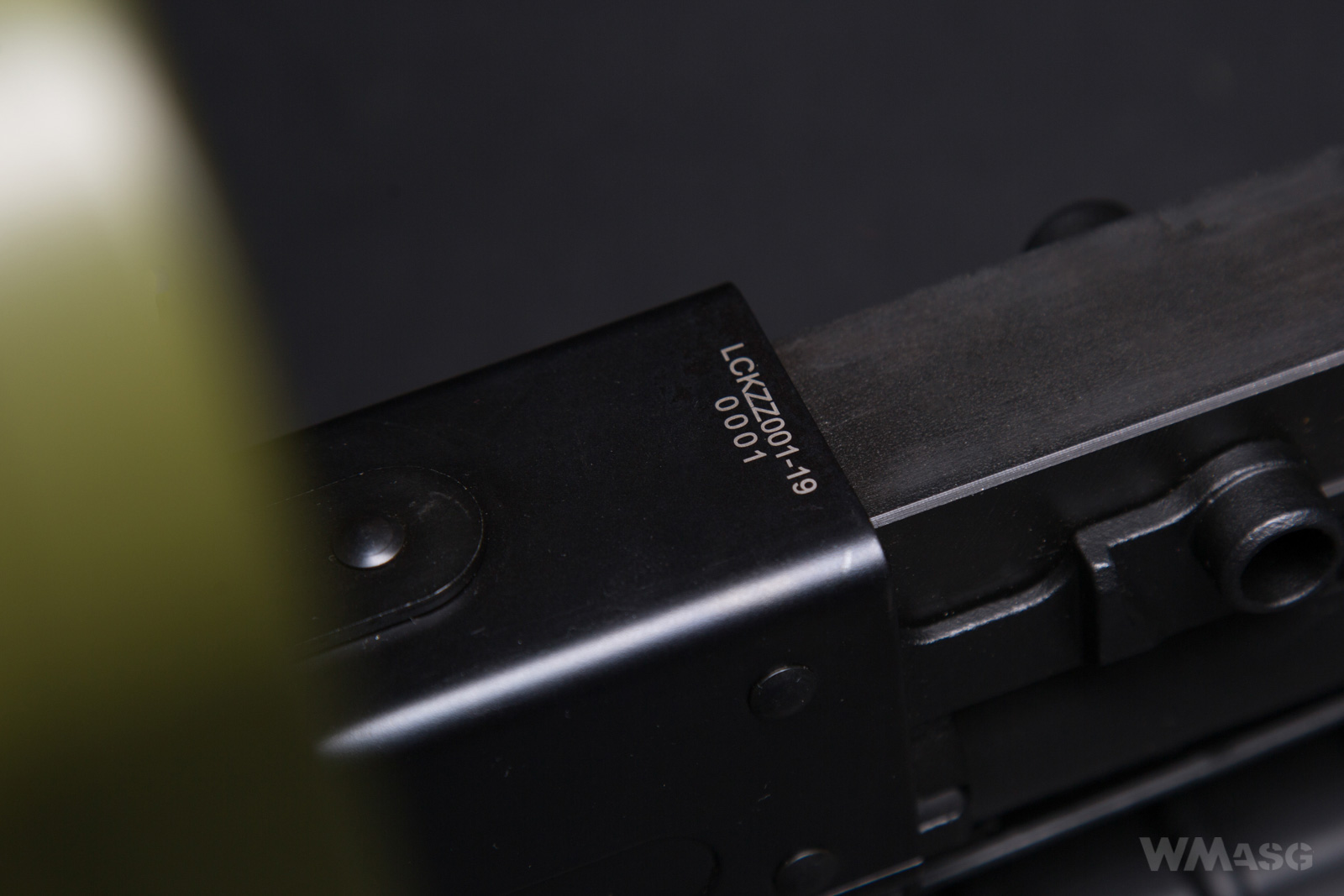
The sights
The rear sight, located on the receiver cover, is adjustable in two planes. The settings markings are filled in orange paint but the proper colour should be white.
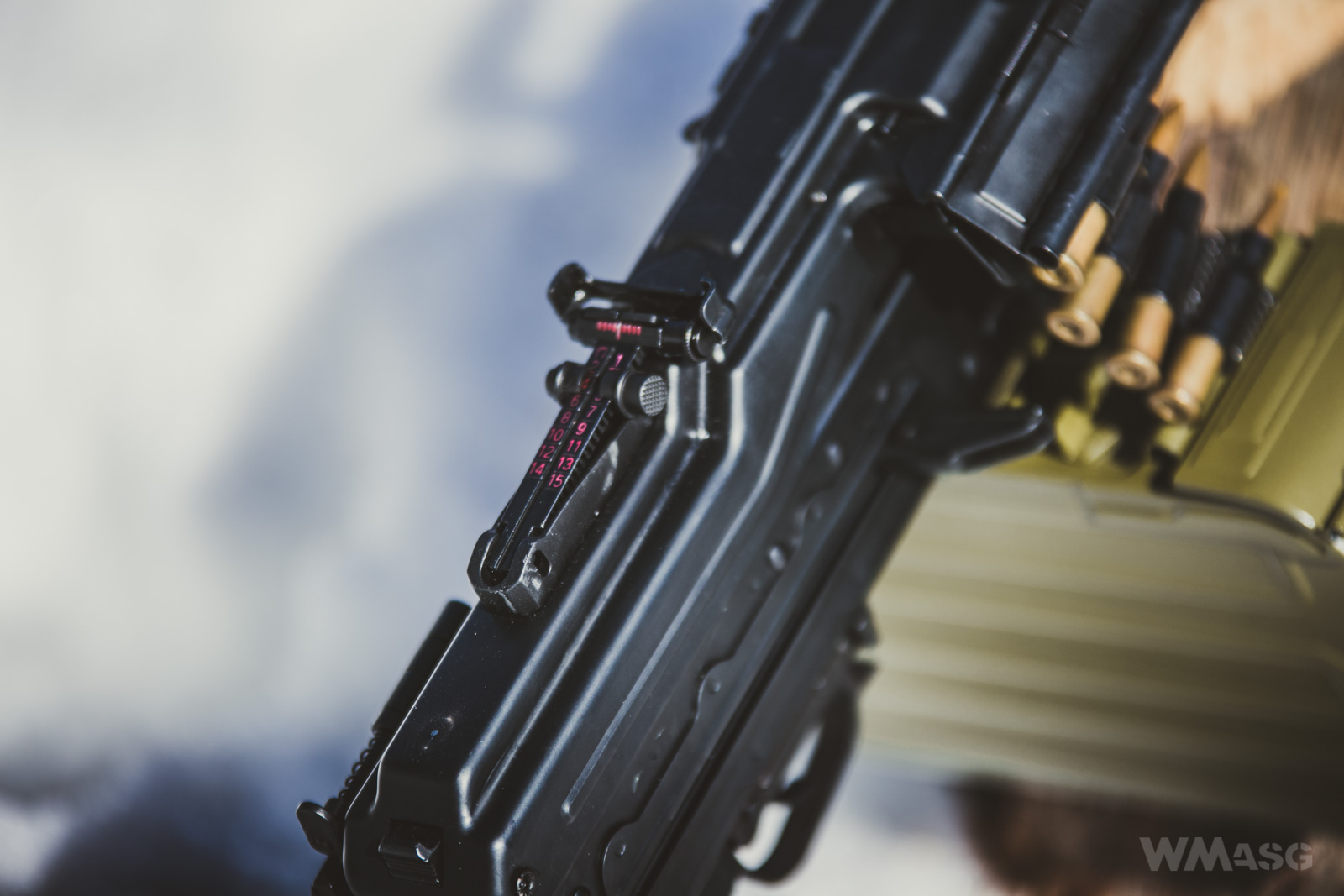
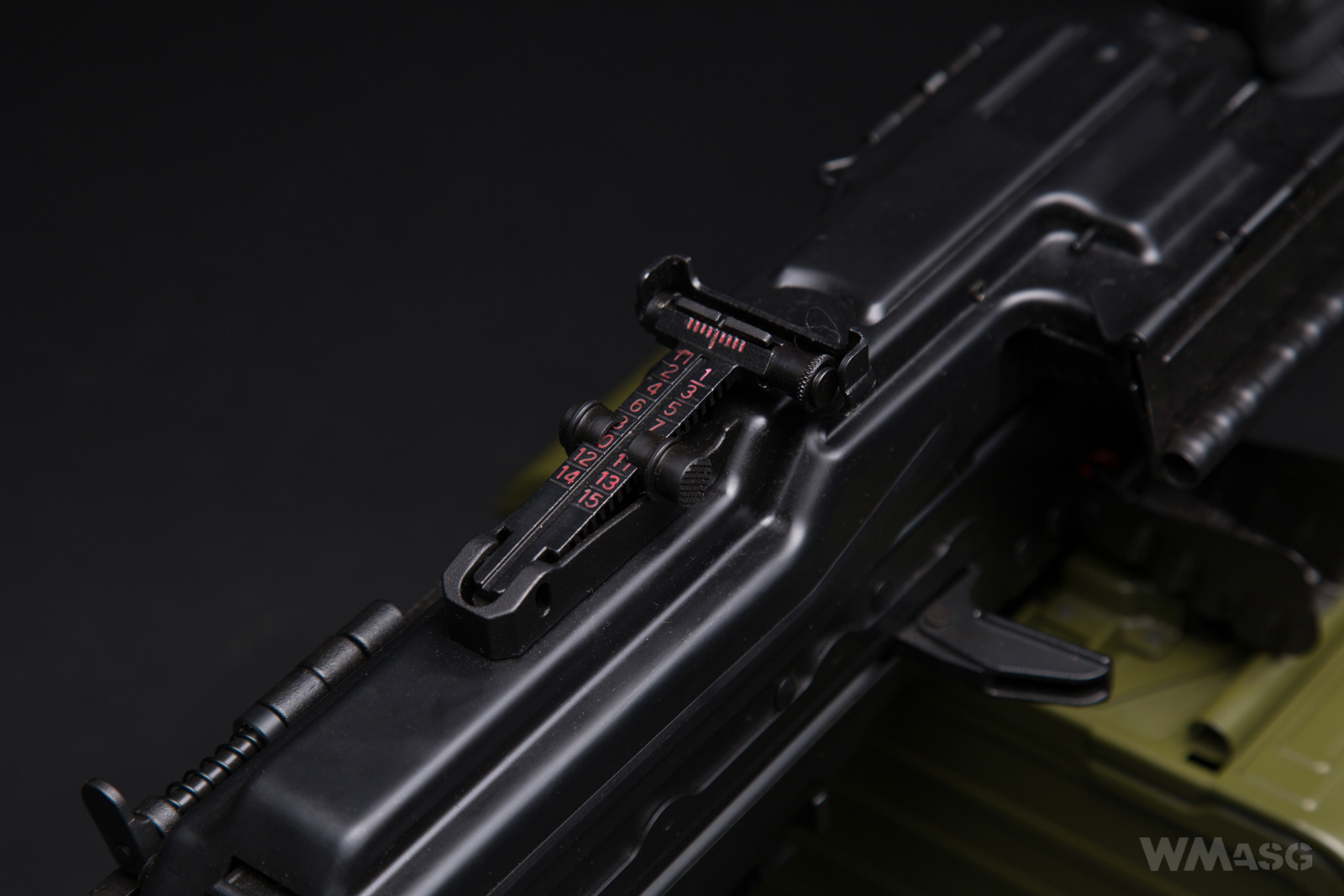
The front sight is mounted on a base pinned to the barrel, which is in accordance with the original gun.
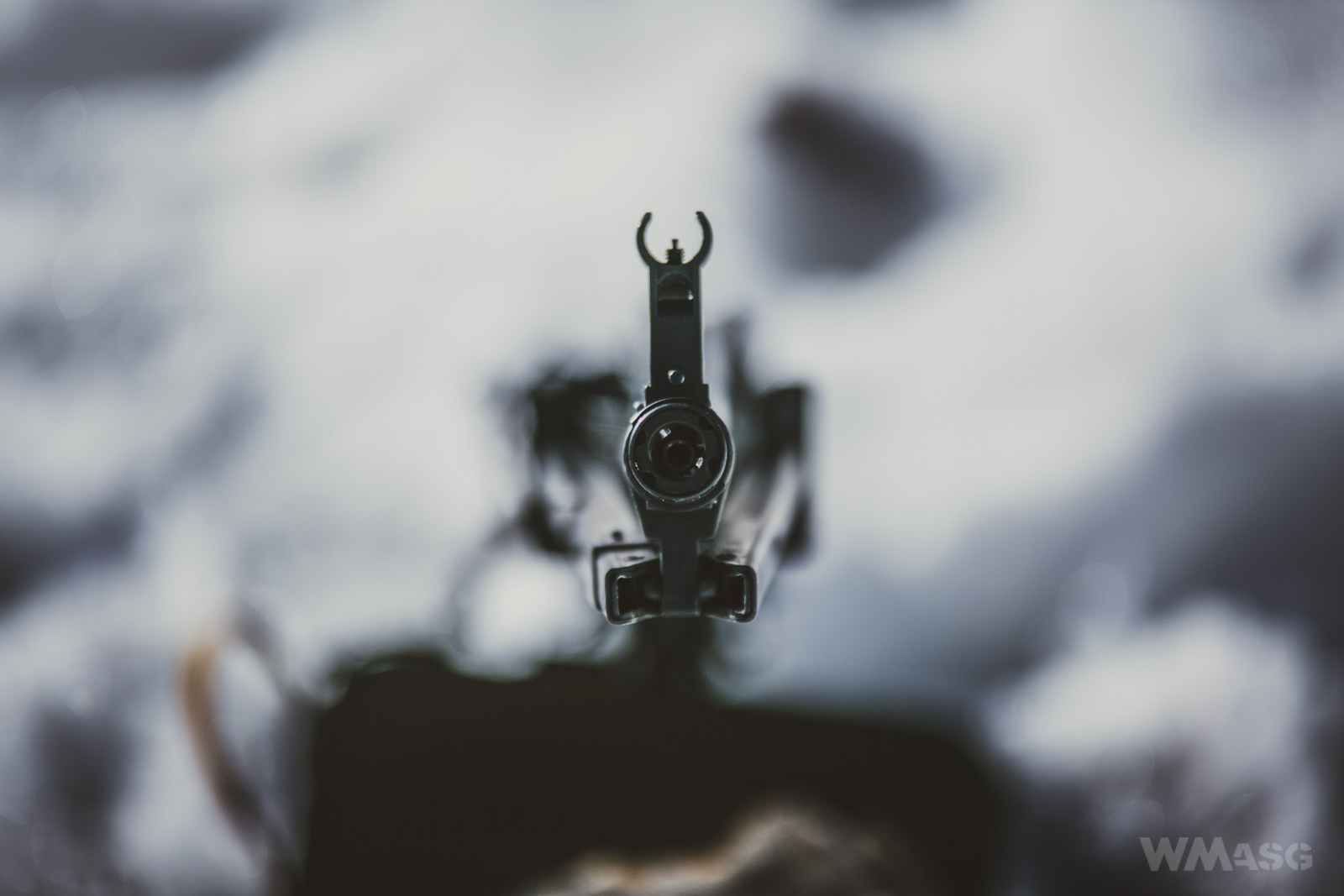
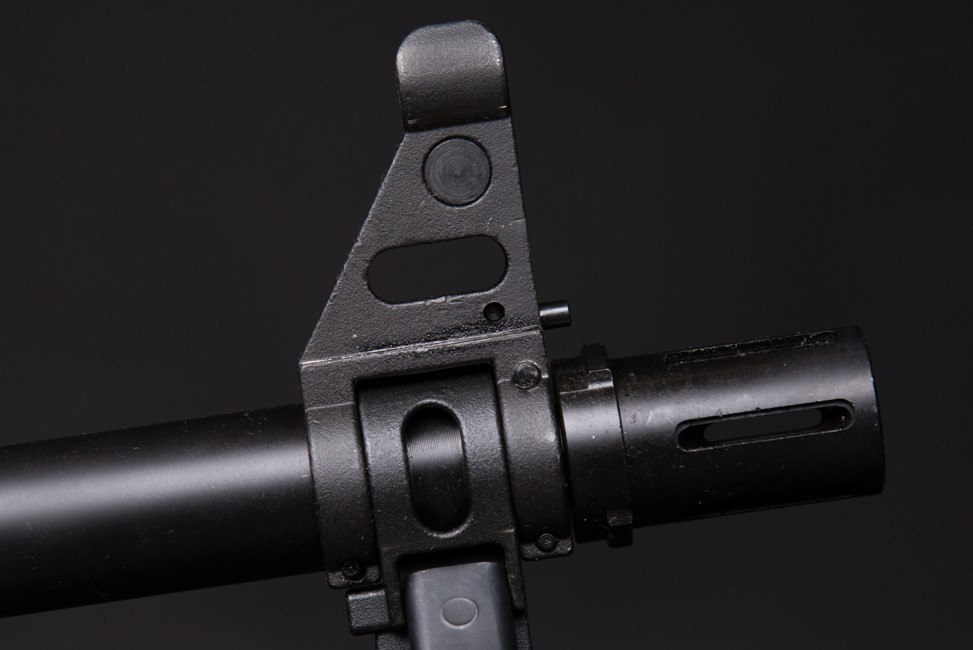
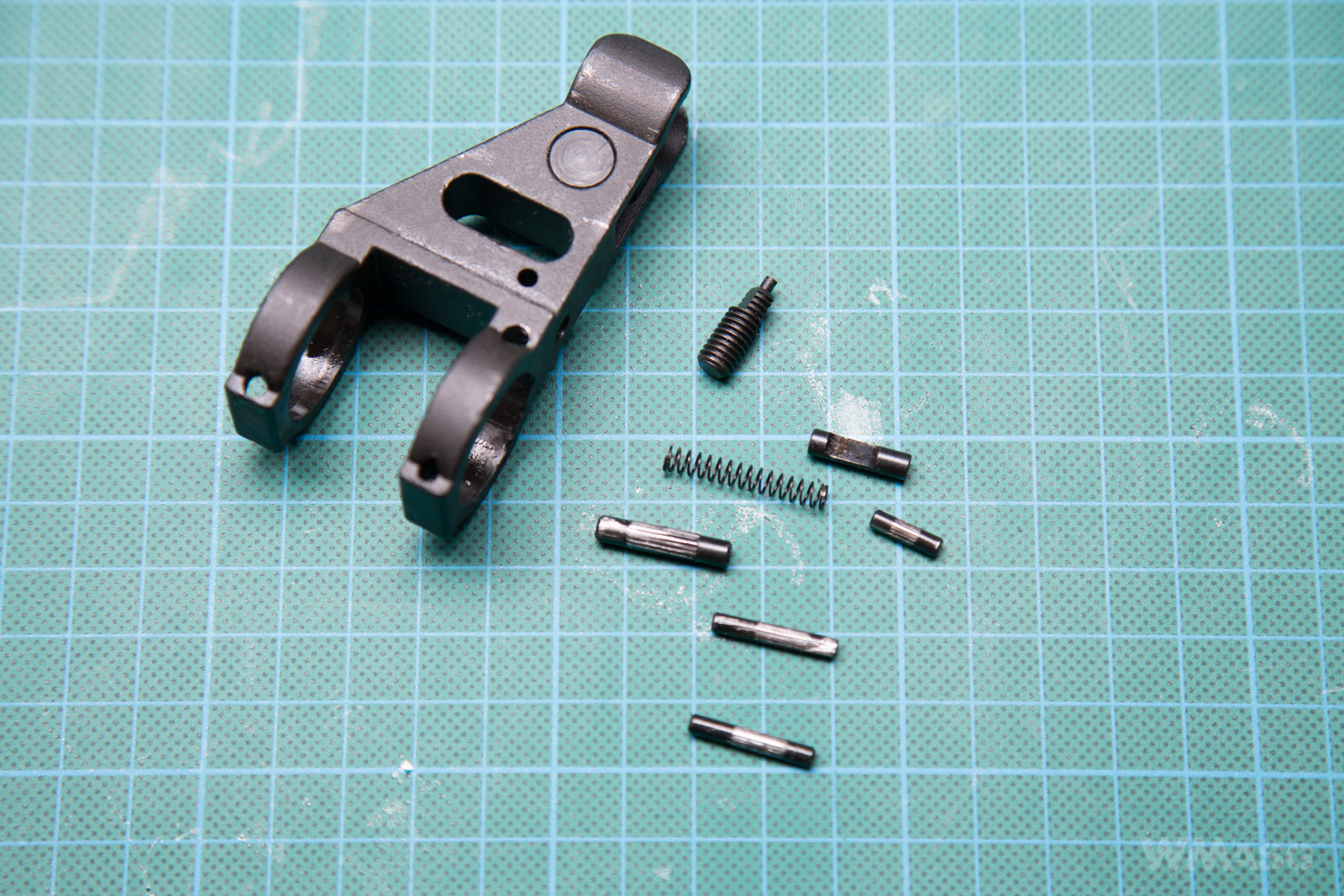 It is adjustable in both planes and is done using tools dedicated to the AK family of guns.
It is adjustable in both planes and is done using tools dedicated to the AK family of guns.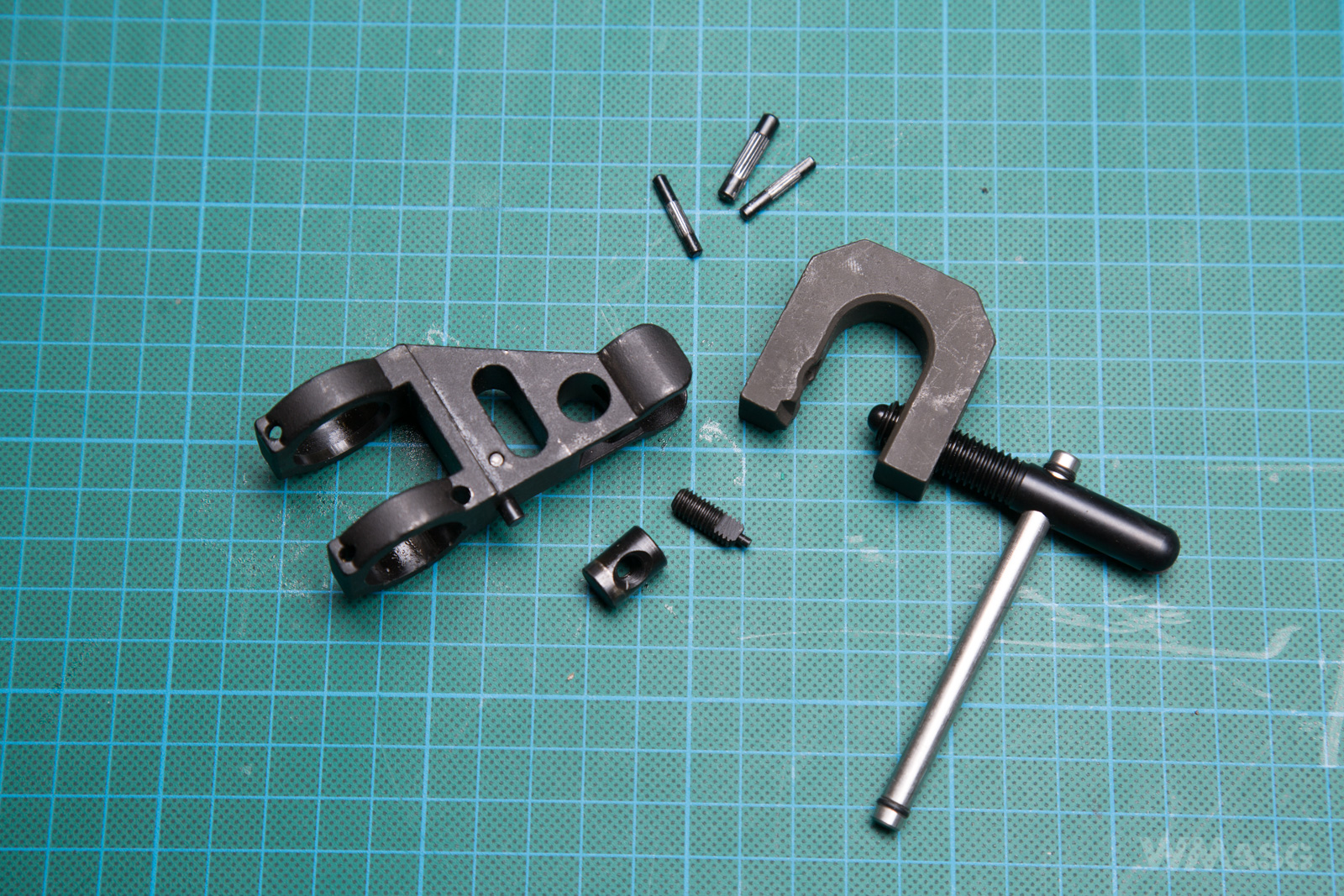
On the next page: the HopUp chamber and internal parts.



